- YouTube Thumbnail Downloader
- Image Compressor
- QR Code Generator
- Environment
- Submit An Article
- Privacy Policy
- Terms and Conditions

Work Life Balance for Employees
- by Refresh Science
- August 24, 2020 January 6, 2022
Work life balance is the state of balancing personal life and professional life. It is a tough task to maintain the work and the family in this fast business world. It is important to balance the time spent outside the work that includes the family, relationships, other personal interests and hobbies.
Defining the work life balance is simple but working professionals everywhere struggle to maintain it. Work life balance should be attained across genders.
Having work life balance helps to reduce stress and chances of burnout. Employees face a lot of problems like depression, anxiety and also health issues like pains, heart problems and hypertension. Burnout is caused when employees work for a long time and have continues stress.

How can an employer allow his employee to maintain work – life balance?
Most of the employees it is necessary to work to have sufficient money to live, so it is challenging for them to bring up such issues with the employer.
The work place of the employees must give the necessary space for their employees to enhance their performance and also can benefited by getting better results. The work environment must also allow the employees to work stress free.
- Employees can be allowed to work in flexible work hours.
- Ability to work from home. If the job or task that can be done from home, then it can be scheduled to be do from home.
- Personal time off: It is big positive if they are given to take personal time without affecting the productivity.
- Can be provided for childcare if needed.
If the concern wants to attract good employees, and keep them, they can acknowledge the importance of work-life balance by offering the following:
- Competitive compensation: one of the biggest stress for employees is money.
- Comfortable office conditions: if the employee is happy at work, they will be more productive.
- Opportunities in professional growth and socialization.
Employers will have to constantly be on noticing in order to find the proper balance to keep productivity up, but also keep their employees happy.
Download Work Life Balance PowerPoint Presentation:
How can an employee ensure work – life balance.
Here we have listed some important steps to ensure work life balance for an employee.
- Take some break
- Set priorities
- Do exercise everyday
- Spend time with family and friends
- Take holiday trips
- Maintaining healthy diet habits
- Getting enough sleep
- Pursuing hobbies
- Leaving work pressure at work
- Schedule one activity you look forward for a day
- Know when to say no

Benefits of work life balance
When employees are given the space and time to live a balanced life, their well being increases and they feel happier.
This definitely results beneficial for both the employee and the employer. The benefits are listed below:
- A motivated employee
- Better levels in efficiency
- Increase in productivity
- Decrease in absence due to sick and stress
- Improves in customer support
- More competition to work in the concern
- Higher retention level
- Success in achieving goals
Thus, maintaining good work life balance benefits both the employer and the employee.
2 thoughts on “Work Life Balance for Employees”
very nice and informative, thanks for sharing
Pingback: Anime History and Origin - PPT Presentation [Free Templates]
Comments are closed.
- Bipolar Disorder
- Therapy Center
- When To See a Therapist
- Types of Therapy
- Best Online Therapy
- Best Couples Therapy
- Best Family Therapy
- Managing Stress
- Sleep and Dreaming
- Understanding Emotions
- Self-Improvement
- Healthy Relationships
- Student Resources
- Personality Types
- Guided Meditations
- Verywell Mind Insights
- 2023 Verywell Mind 25
- Mental Health in the Classroom
- Editorial Process
- Meet Our Review Board
- Crisis Support
Why Work-Life Balance Is So Important—and How to Nail It
When the workday is over, it should really be over
Kendra Cherry, MS, is a psychosocial rehabilitation specialist, psychology educator, and author of the "Everything Psychology Book."
:max_bytes(150000):strip_icc():format(webp)/IMG_9791-89504ab694d54b66bbd72cb84ffb860e.jpg)
Rachel Goldman, PhD FTOS, is a licensed psychologist, clinical assistant professor, speaker, wellness expert specializing in eating behaviors, stress management, and health behavior change.
:max_bytes(150000):strip_icc():format(webp)/Rachel-Goldman-1000-a42451caacb6423abecbe6b74e628042.jpg)
Mixetto / Getty Images
- What Do We Mean When We Say "Work-Life Balance"?
How Can I Tell If I Have a Healthy Work-Life Balance?
Can i request a healthier work-life balance (if so, how), how to improve your work-life balance.
Does it ever feel like your job is taking over your life? Or do you seem to have so many personal obligations that you can’t give 100% at work? We know we need work-life balance, but finding harmony between your professional and personal life isn't always as easy as it sounds.
Work plays a major role in our lives. It takes up much of our waking hours during the traditional workweek. That’s why it’s so important to make sure that we are also taking care of the areas of our lives that keep us healthy and happy.
Professional fulfillment can be a part of that, for sure. But well-being also involves all of the things outside of work that makes your life worthwhile, including your family, hobbies, health, and relationships (not to mention sleep, exercise, balanced meals, and relaxation).
At a Glance
Work-life balance generally refers to a balance between your personal and work life. The goal is to strive to keep that balance so that we are managing stress and burnout by fulfilling other areas of our lives that aren't swallowed up by work. Remember: That "balance" may shift at times and is never really a 50/50 split. We can accept that there may not ever be a balance, but we can strive to feel more grounded and balanced by making a personalized plan, exploring ways to improve that balance with our manager, taking breaks, and creating set boundaries between our personal vs. professional duties. If we're in a position to change jobs and our conversations with our manager are unsuccessful, we could also explore other opportunities that offer more flexibility.
What Do We Mean When We Say "Work-Life Balance"?
Work-life balance is usually defined as an equilibrium between your professional and personal life. When you keep things balanced, no single element of your life dominates and overwhelms the others.
"Work-life balance is the concept that you effectively manage your professional life and responsibilities so that you are productive and successful at work while ensuring you have plenty of dedicated time to live a fulfilling, grounded, personal life," says Abbey Sangmeister, MS.Ed, LPC, ACS .
That’s a general definition of the concept, but "work-life" balance can also mean different things to different people. Researchers suggest that this is because this balance is all about individual perception. It's something you feel when your work and non-work activities are in harmony and are compatible with your current goals and priorities.
The things that make your own work-life situation feel manageable may differ depending on your needs and your situation.
For working parents, it often means finding a way to juggle the responsibilities of a career while still finding time for a fulfilling family life. With rising numbers of older workers, work-life balance may focus more on staying active in the workforce while finding ways to manage health issues or disabilities.
Major shifts in how we work have also helped change the definition of work-life balance for many people. For many people, work-life balance meant clocking out at 5 p.m. and not thinking about work until you showed up at the office at 9 a.m. the next day.
Being tethered to an office is a thing of the past for many folks. It makes sense that, for many of us, the option for flexible or remote work is an essential part of work-life balance. This means that work-life balance is much more personal and nuanced these days–but it also makes finding a balance harder than ever before.
Many times people think balance is a 50/50 split but that is not always the case. For each person, the balance may look different and will shift during different seasons of their life. The important part of having balance is that the person does not feel that one area of life is draining and depleting the other.
What Work-Life Balance Is Not
Work-life balance isn’t about slacking off, skipping work, or putting in less effort . Obviously, we all have our good and bad days, but there are ways to manage the days we’re feeling a little "off" that don’t involve hurting yourself professionally.
Procrastinating or shirking your responsibilities aren’t effective ways to cope. You might feel a little better for a bit, but it ultimately creates more problems in the future. Work piles up, deadlines fly by, and your employer might start to notice that you’re not putting in your best effort.
The goal is to find a harmonious balance that works for you, between the demands on your time and energy, without neglecting important areas of your life.
You don’t want to ignore your personal life in favor of your job, but you also shouldn’t deal with stress by neglecting your workplace duties.
So how exactly can you tell if you have a healthy work-life balance? It can look a little different for everyone (since we all have different work, family, and relationship situations).
"Lack of regular overwhelm and frustration are good signs that one does have good work-life balance. People who struggle with the Sunday scaries and dread or have a case of [the] Mondays more times than not are most likely struggling with an imbalance," Sangmeister suggests.
The following are a few signs that you’re striking a good balance between your job and other areas of your life:
- You don't feel like the demands of your work roles and personal obligations are constantly in conflict
- You're able to meet your deadlines at work without having to work overtime
- You're getting plenty of sleep at night and eating a healthy, balanced diet
- You don't spend the end of your weekend consumed by the " Sunday Scaries "
- You have plenty of time to relax and enjoy your hobbies
- You feel like you're spending enough time with family and friends
- You don't worry about your job when you're not at work
- You feel like you're being productive at work and making progress toward your professional goals, but you don't feel like your whole identity hinges on your job
- You're taking your vacation days (and using your sick days when you need them)
- You're taking advantage of any work-life benefits your employer offers, like gym memberships, flexible scheduling, and childcare vouchers
Remember that work-life balance isn't something you can just check off your to-do list. It’s only natural that the demands of your job and outside life shift and change over time. That means that what you need to keep the balance will change over time.
"With a good work-life balance, a person is less likely to be rigid with their schedule," Sangmeister says. "Instead, they are able to be flexible and can adapt to include demands that may come up professionally or personally without disrupting the feeling of balance."
To figure out if you have a good work-life balance, think about what's most important to you. What helps you to feel your best? Are you taking care of yourself personally and professionally? Are you managing your stress and watching for signs of burnout?
If you're struggling to find a balance between work and the rest of your life, it might be time to have a conversation with your supervisor. This includes work-life benefits like hybrid, flexible, or remote work. Flextime, alternative work schedules, child care options, and access to mental health services are important work-life benefits employers offer to attract employees.
There are things that your employer can do to help foster a better work-life balance. It's something that benefits them as well. Research has shown that workers with better work-life balance are more satisfied with their jobs , perform better at work, and are more committed to their organizations.
A conversation with your employer might help you find ways to work together to make things more manageable. This might involve reprioritizing your tasks, delegating some work to others, hiring additional help, or allowing you to work remotely when needed.
Unfortunately, these aren't always options, depending on the nature of your profession or your role in the workplace. In many cases, making a change hinges on how you approach your job. It might mean changing your priorities, delegating tasks at home, or letting your colleagues know you can no longer respond to work-related problems during your downtime.
It's also important to be aware of your legal rights. If you need certain accommodations because you are pregnant or have a disability, these needs may be protected by the Family and Medical Leave Act (FMLA) or the Americans with Disabilities Act (ADA).
This includes protections if you are dealing with depression , anxiety , or another mental health condition. (You will need to have your condition diagnosed by your doctor, and you may need to provide documentation for your employer when you request an accommodation.)
How to Ask Your Boss for Better Work-Life Balance
Schedule a time to talk to your employer and tell them what you plan to discuss. During your meeting, explain your problem, and share your ideas for how you think you can work together to resolve the issue.
If you've been overwhelmed by your workload and putting in too many hours, you might suggest redistributing some of your tasks to other team members to help lighten the load.
Remember to stay professional and show respect for your employer's needs. Reiterate your commitment, and explain that you think finding a better balance will help you feel more productive and satisfied with your job.
So what’s next if you feel like your work-life balance is in shambles? It's time to take a step back, figure out what is wrong, and make a plan to fix it. Your health literally depends on it.
Many studies have demonstrated that people who have more conflict between their work and non-work life are more likely to experience health problems, mental health conditions, and poor overall health outcomes.
Make a Plan
Bringing more balance to your life starts with figuring out what’s causing the problem in the first place. Are your work hours too long? Or are work obligations encroaching on your off-time? Do you feel like you have no control over your schedule? Or are you taking on too many demands and need some relief?
Creating a personalized plan for how you are going to tackle your work-life balance can help you figure out what's wrong and which strategies will be most effective .
Create Divisions Between Your Work and Non-Work Life
Flexible and remote work can be a great way to promote balance in your life, but it often blurs the lines between your personal and professional life. You may find yourself working longer than normal hours, catching up on work when you should be relaxing, or staying up late to answer those last few emails you forgot to send earlier.
The problem is that, over time, there is a distinct lack of balance. Because you never feel like you have any mental space from your job, it starts to feel like you’re always working. Your home life becomes your work life.
If you are fully or partially remote, there are things you can do to help promote better work-life balance:
- Create a schedule : Figure out which hours you can work during the day and stick with it. Creating a regular schedule can help you feel more productive. “ Start your mornings off with routines and rituals that are grounded. If you start your day sprinting the moment your alarm goes off, that energy carries through the day and leads to burnout,” Sangmeister says.
- Get ready for work : While you don't need to wear a suit and tie to work from your home office (unless you want to), consider wearing something other than your favorite 'lounging around the house' outfit. Dressing professionally when you are working can help create a mental division between your job and your home life.
- Let other people know when you're offline : Use different communication tools to let others know when you are offline. For example, put your work hours on your Google Calendar, set your Slack availability to prevent notifications during your off-time, and set up out-of-office emails when you are on vacation.
- Plan activities during your non-work hours : Give yourself things to look forward to once you are off work. It might involve getting together with friends, but it can be as simple as preparing a nice meal and settling in to stream an episode of a series you’re watching.
Take Breaks
Taking breaks is also essential. This includes mini-breaks during the work day and periodic days off or vacations.
"Taking an intentional day off periodically is a great way to improve work-life balance,” Sangmeister explains. "On these intentional days off, don’t just tackle a to-do list and chores; instead, work on personal development and mindfulness."
She also recommends mini-vacations and tech-free weekends . Even scheduling a little tech-free time each day can be helpful.
Don't Work When You're Not at Work
It might sound obvious (and simple), but it can be harder to stick with than you might expect. When your workday is over, it needs to be over. That means no checking work emails, looking at notifications, or logging in to finish "one last thing."
Even if all you're doing is reading your messages that you plan to work on tomorrow, you're letting your work interfere with your personal time. It creates pressure and stress that distracts you from feeling fully relaxed or completely present during non-work hours.
Set boundaries around the hours you work and create no work zones. That means even when you have “free time,” you aren’t going to open your phone or laptop to do work at certain times or in certain places.
Know What Burnout Looks Like
When your work-life balance is seriously screwed up (i.e., you're spending every waking moment working, thinking about work, stressing about work, or dreading work), there's a good chance you're headed for burnout .
Being burned out is more than just being tired and unmotivated—it means you've reached a state where you feel so exhausted and empty that you can hardly cope with daily life, let alone care about work.
Signs of burnout can be physical, such as headaches, high blood pressure, stomach aches, and frequent illness. But they are also mental and include problems sleeping, depressed moods, loss of interest, fatigue, problems concentrating, and apathy .
If you’ve reached this point, it means you need to make serious changes to your work environment. That might mean taking time off or switching to a different position. Sometimes, it might even mean thinking about changing jobs altogether.
Consider Changing Jobs
So you’ve had a conversation (or more than one) with your boss, but they are refusing to offer any flexibility to make any changes that will help you feel better about your relationship with your job–what now?
If poor work-life balance is taking a toll on your well-being and isn't something you can solve on your own or by working with your employer, it might be time to consider taking a more serious step–changing your job altogether.
Wait until you’ve had time to consider the problem and your options. Spend some time looking at other positions in your field (or even other fields if you’re ready to make a more significant change). Look at job review sites to see what other current and past employees are saying to learn more about what you might find in terms of work-life balance if you take a job with another company.
Finding a job you truly love can be a great way to feel more positively about the balance between your work and your outside life.
What This Means For You
Finding that perfect balance between your work and your life can seem like performing a tightrope act. If you're struggling, it might be worth talking to your boss about how they can help support your well-being (and foster greater job satisfaction and loyalty). Remember: the goal is not to have a 50/50 balance—it's about finding a balance that feels good to you and, most importantly, works for you.
Taking steps to manage your time and boundaries is also essential. Make time for family, friends, hobbies, health, and self-care—the things that help you feel personally fulfilled outside of work. "Schedule, schedule, schedule," Sangmeister recommends. "Make these appointments just as important as any work meeting."
Gragnano A, Simbula S, Miglioretti M. Work-life balance: Weighing the importance of work-family and work-health balance . Int J Environ Res Public Health . 2020;17(3):907. doi:10.3390/ijerph17030907
Wong KP, Lee FCH, Teh PL, Chan AHS. The interplay of socioecological determinants of work-life balance, subjective wellbeing and employee wellbeing . Int J Environ Res Public Health . 2021;18(9):4525. doi:10.3390/ijerph18094525
Sirgy MJ, Lee D-J. Work-life balance: An integrative review . Appl Res Qual Life . 2018;13:229–254. doi: 10.1007/s11482-017-9509-8
Borowiec AA, Drygas W. Work-life balance and mental and physical health among Warsaw specialists, managers and entrepreneurs . Int J Environ Res Public Health . 2022;20(1):492. doi:10.3390/ijerph20010492
By Kendra Cherry, MSEd Kendra Cherry, MS, is a psychosocial rehabilitation specialist, psychology educator, and author of the "Everything Psychology Book."
Home Collections Strategy / Business Plan Work Life Balance Work Life Balance Presentation Template
Work Life Balance Presentation Template PPT & Google Slides
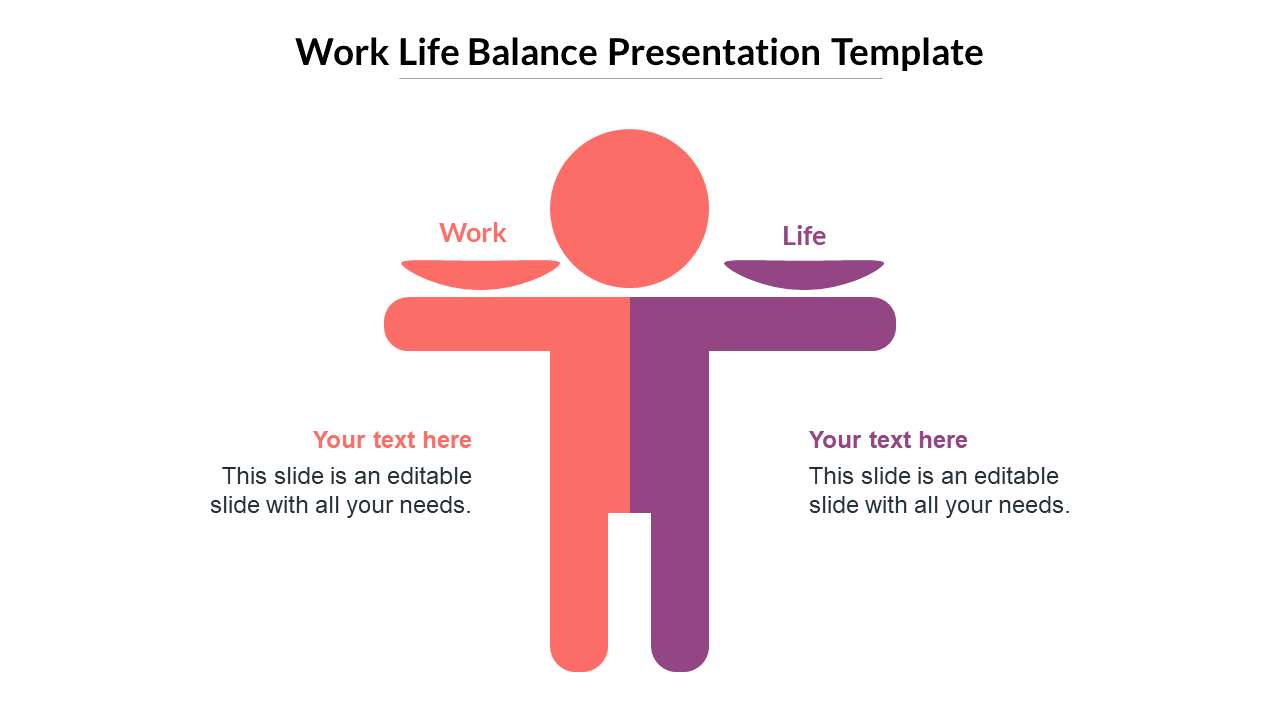
Work Life Balance Presentation Slide
Features of the template.
- 100% customizable slides and easy to download.
- Slides are available in different nodes & colors.
- The slides contain 16:9 and 4:3 formats.
- Easy to change the colors quickly.
- It is a well-crafted template with an instant download facility.
- It is a 100% pre-designed slide.
- Highly compatible with PowerPoint and Google Slides
- It has an excellent design to present your idea.
- work life balance
- Work Life Balance
- Work Life Balance Strategies
- Life Balance
- Blanced Life
- Healthy Work Life Balance
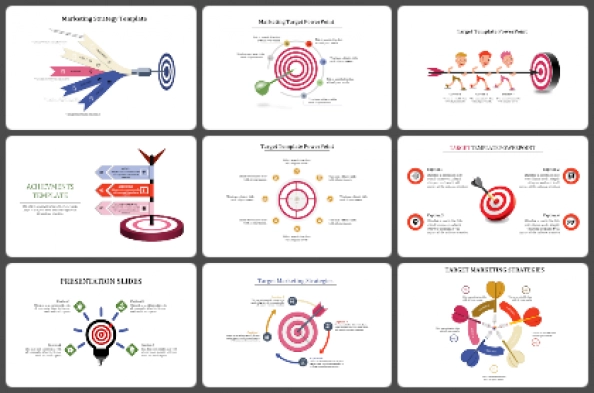
330+ Templates
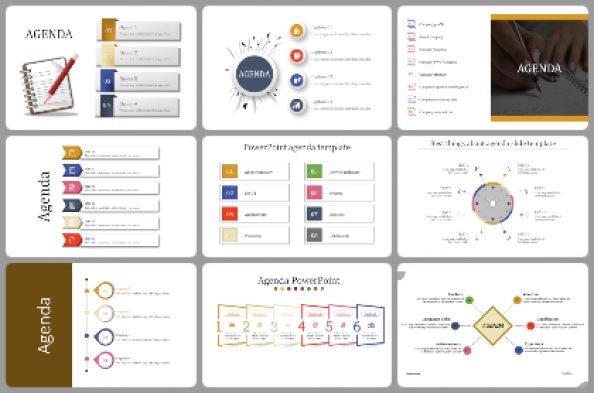
1099+ Templates
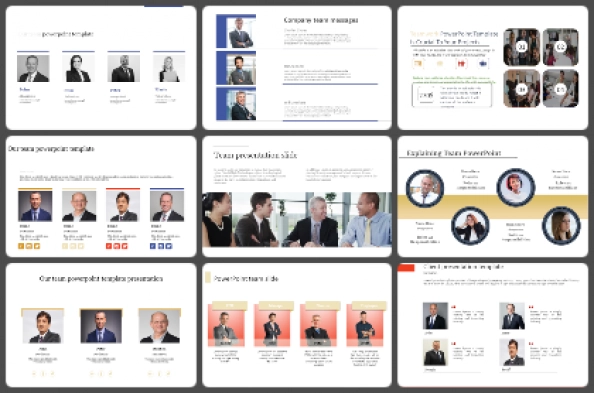
Team / Teamwork
347+ Templates
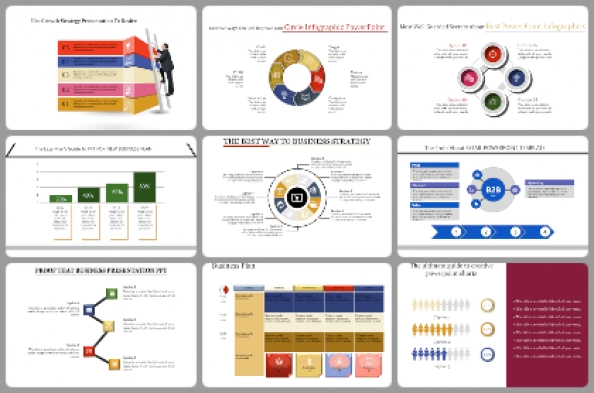
Strategy / Business Plan
6672+ Templates
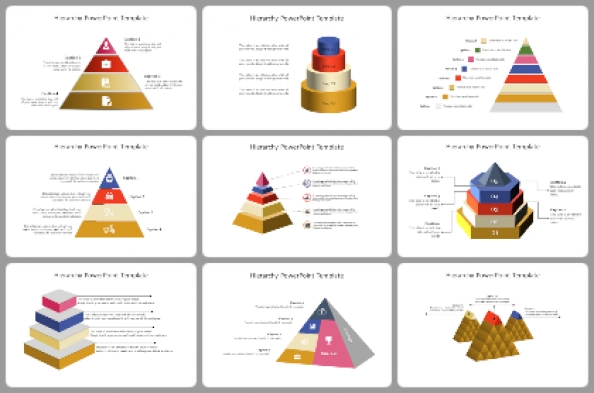
55+ Templates

511+ Templates
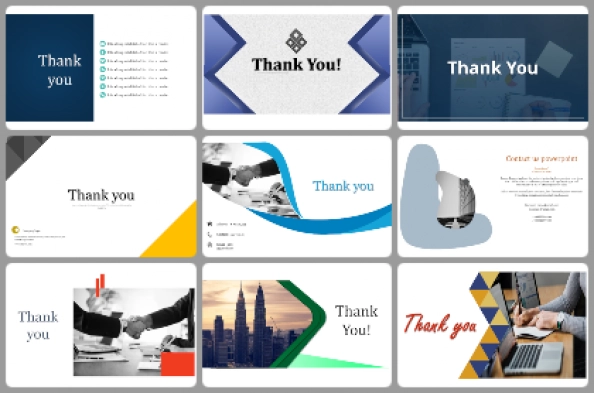
413+ Templates
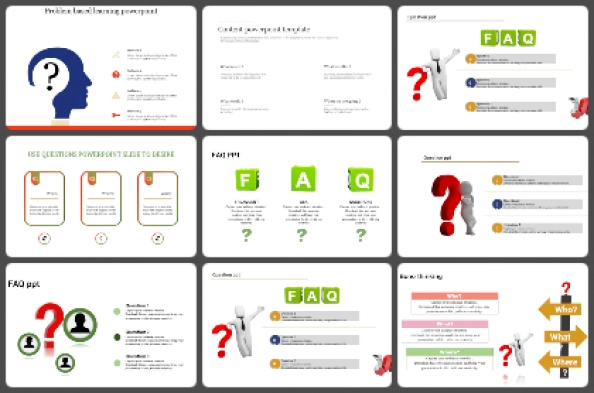
72+ Templates
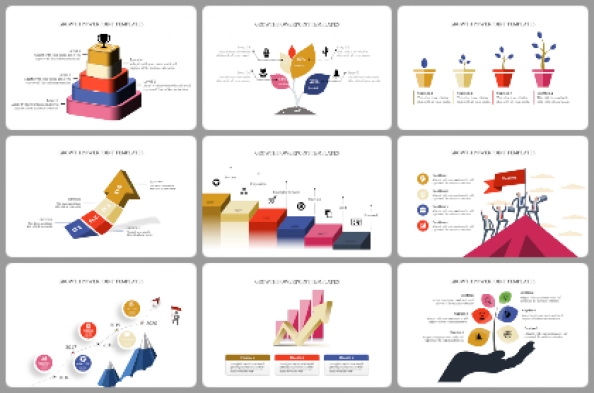
686+ Templates
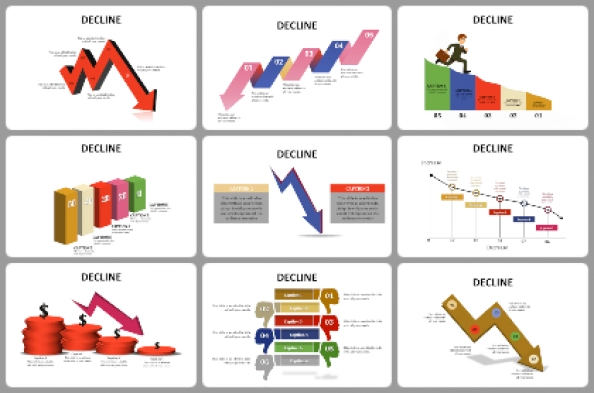
13+ Templates
You May Also Like These PowerPoint Templates
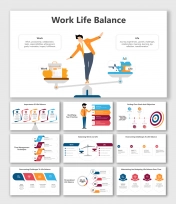
You are using an outdated browser. Please upgrade your browser to improve your experience.
Work Life Balance PowerPoint Templates
Our vast library of Work Life PowerPoint templates are professionally designed to elevate your presentation style in any professional meeting. The collection provides a comprehensive framework to professionals across industries to streamline their efforts, ideas and overall message. The fully editable Work Life PowerPoint and Google Slides templates breathe life into complex facts, figures and information and present them in an engaging manner to ensure a long lasting impact on your audience’s minds.
Our extensive collection of Work Life PPT templates promote productivity and convenience when it comes to its applications. These templates have been thoughtfully designed to ensure maximum visual impact. Explore our collection of Work Life presentation templates and download the perfect template to take your presentation to new heights!
- Price <= $5.99
- Price > $5.99
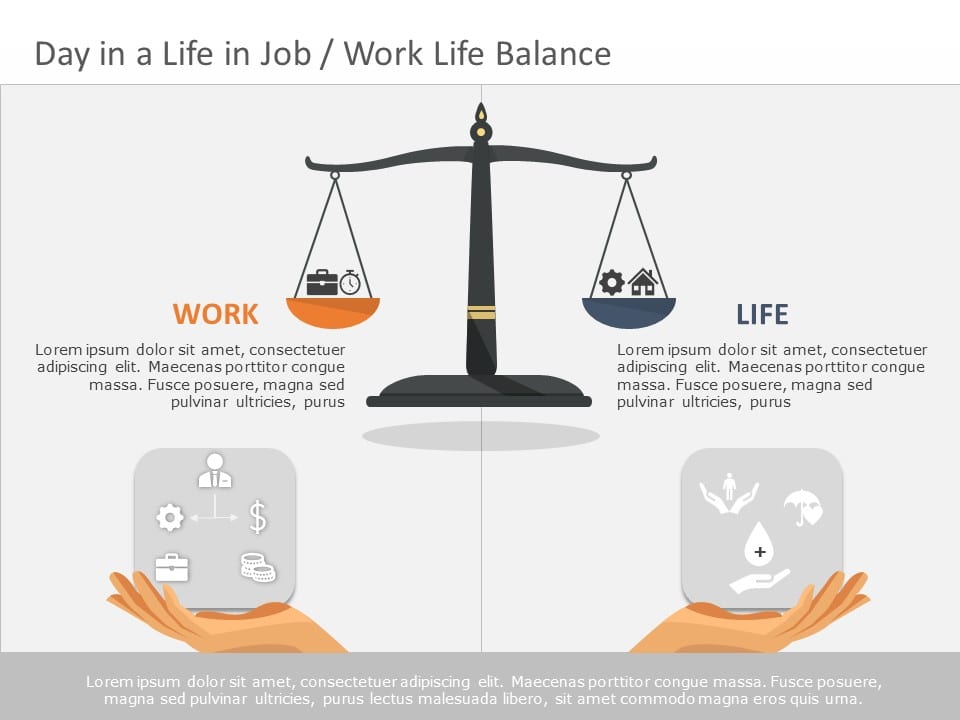
Work Life Balance 03 PowerPoint Template
Login to use this feature
Add-to-favs lets you build a list for inspiration and future use.
Log in now to start adding your favs.
If you don't have one. A free account also gives you access to our free templates library
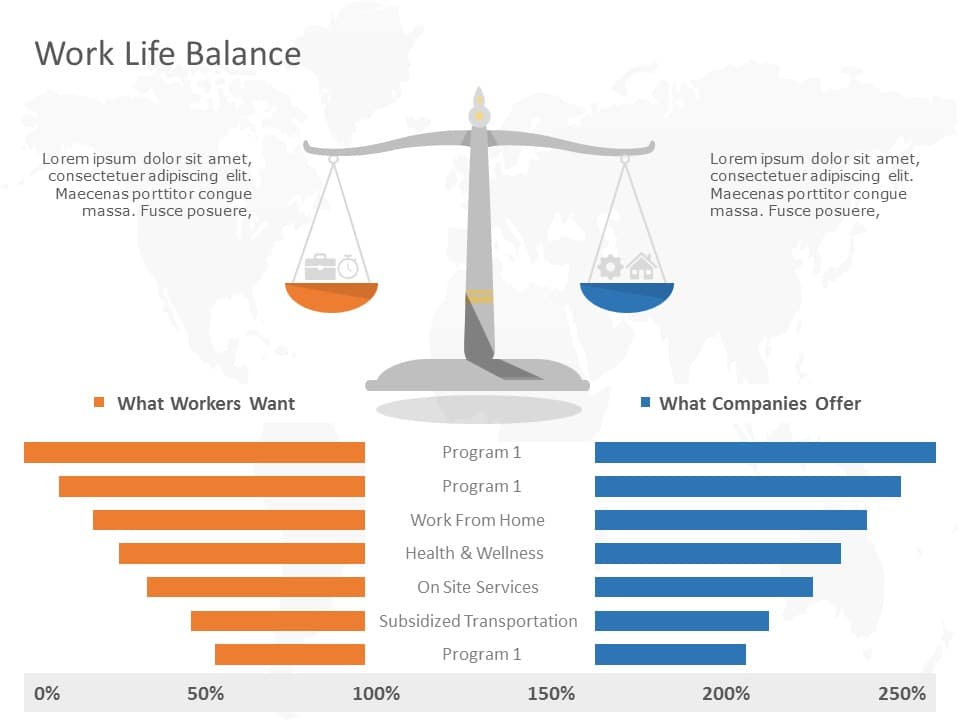
Work Life Balance 05 PowerPoint Template
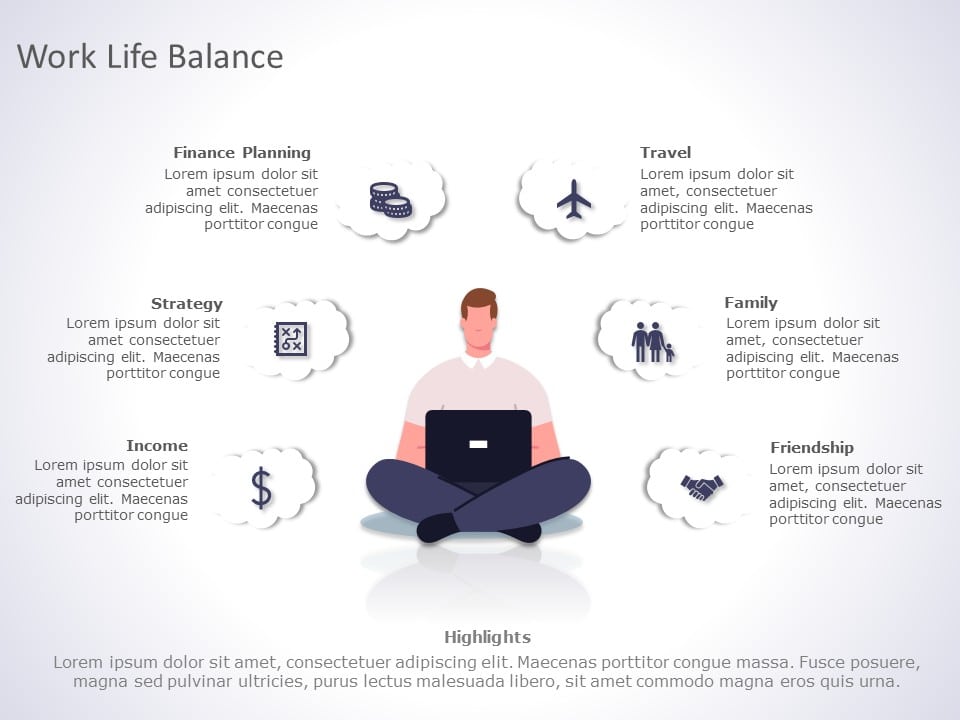
Work Life Balance 04 PowerPoint Template
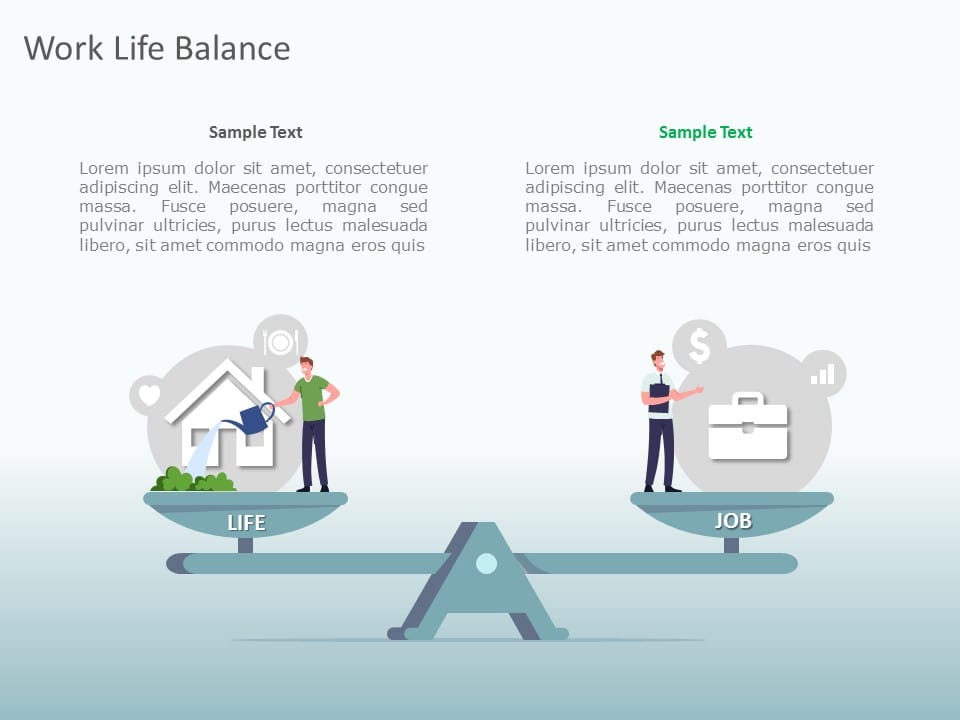
Work Life Balance 01 PowerPoint Template
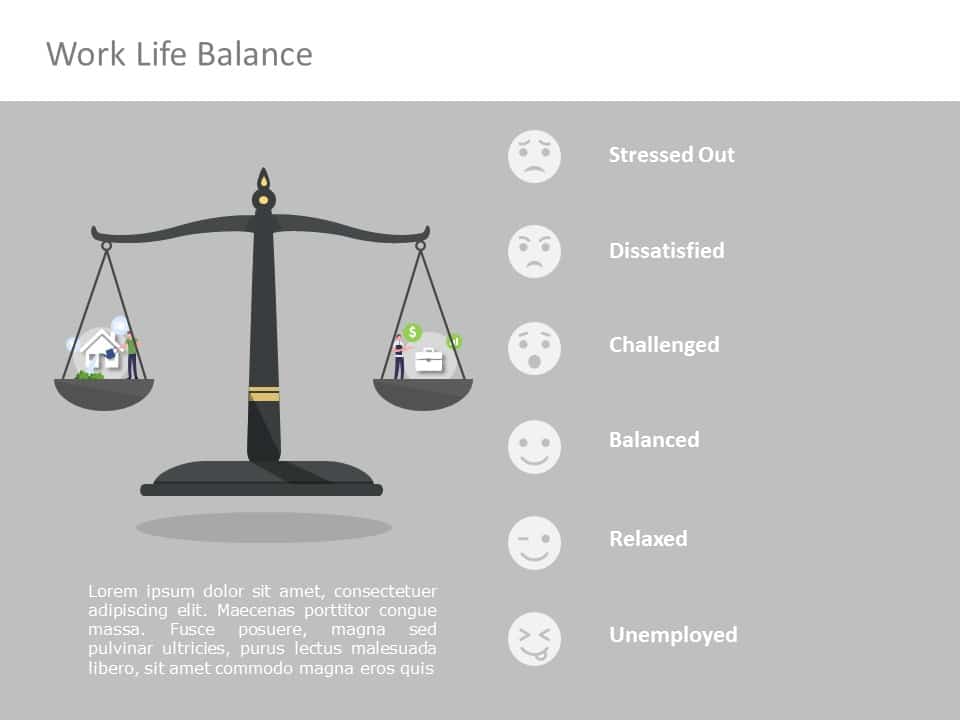
Work Life Balance 06 PowerPoint Template
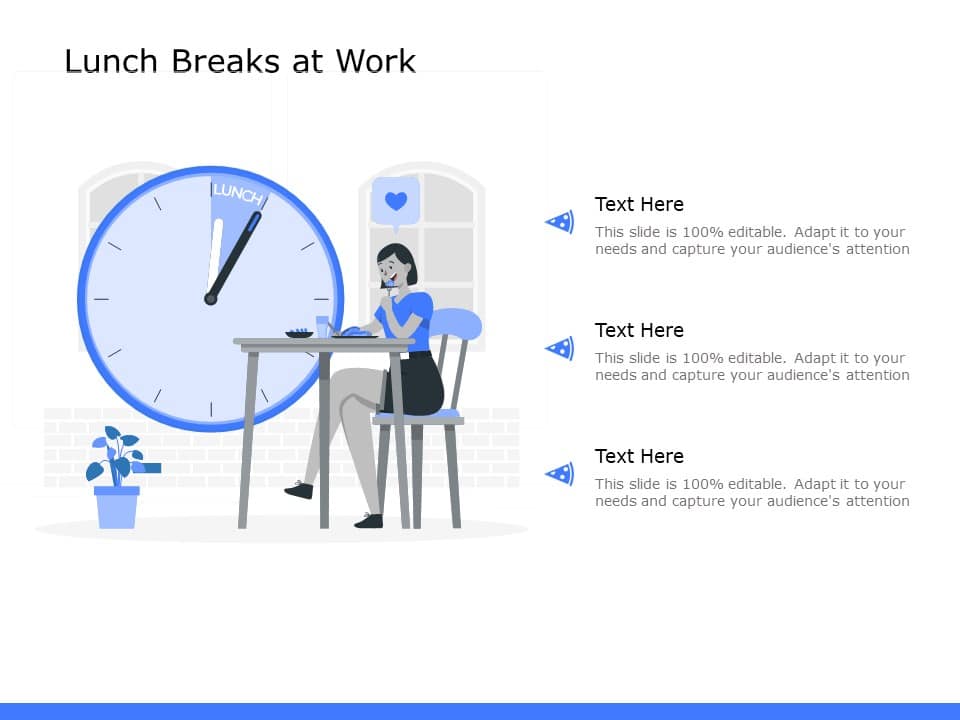
Lunch Break PowerPoint Template
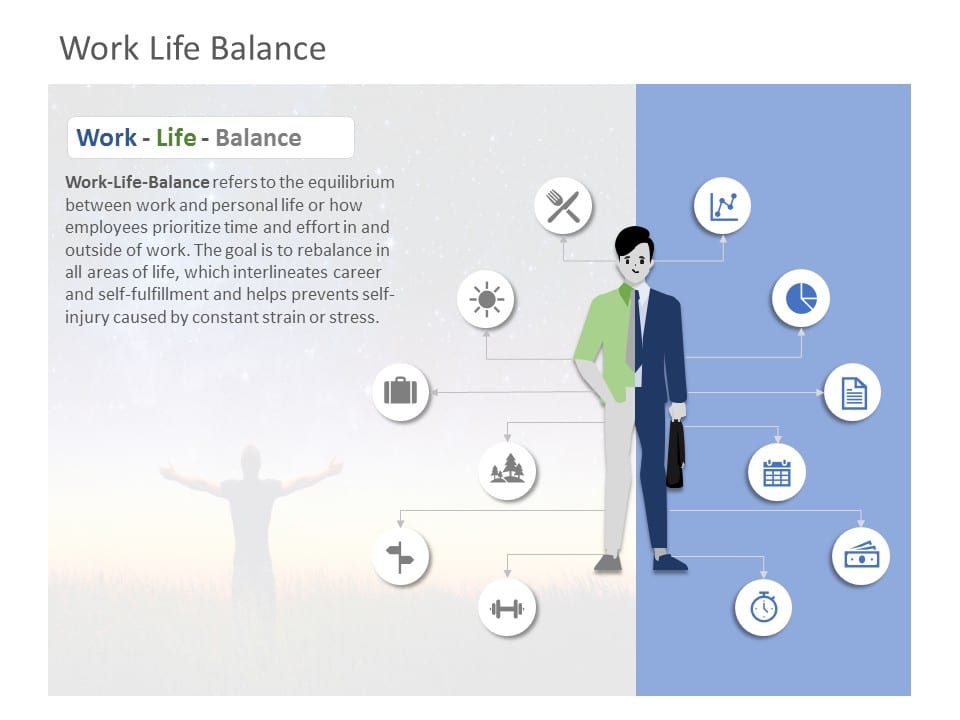
Work Life Balance 07 PowerPoint Template
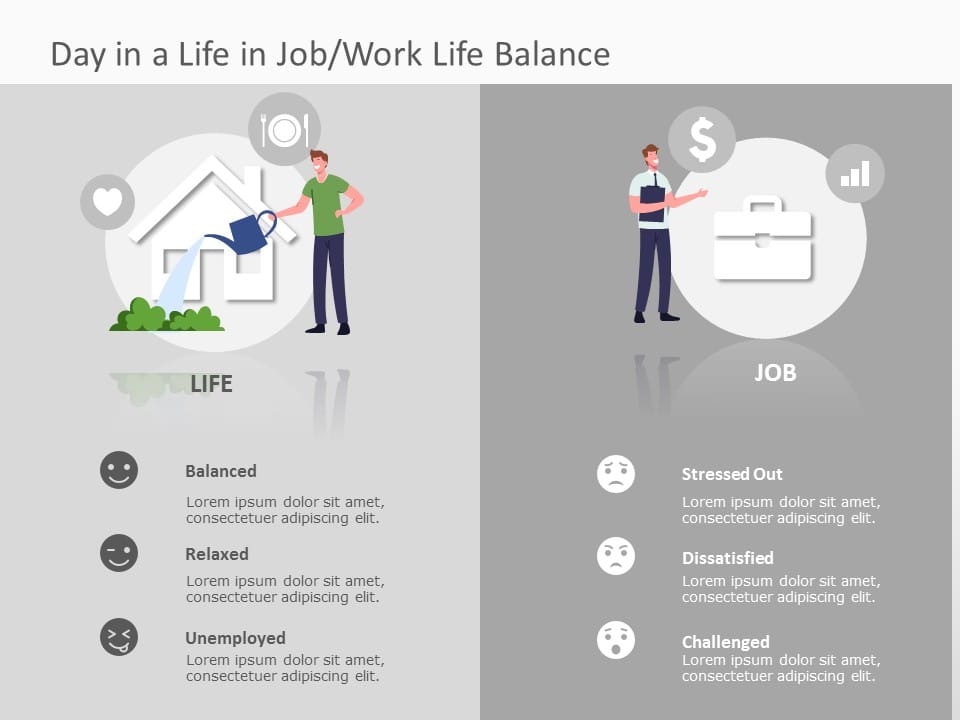
Work Life Balance 02 PowerPoint Template
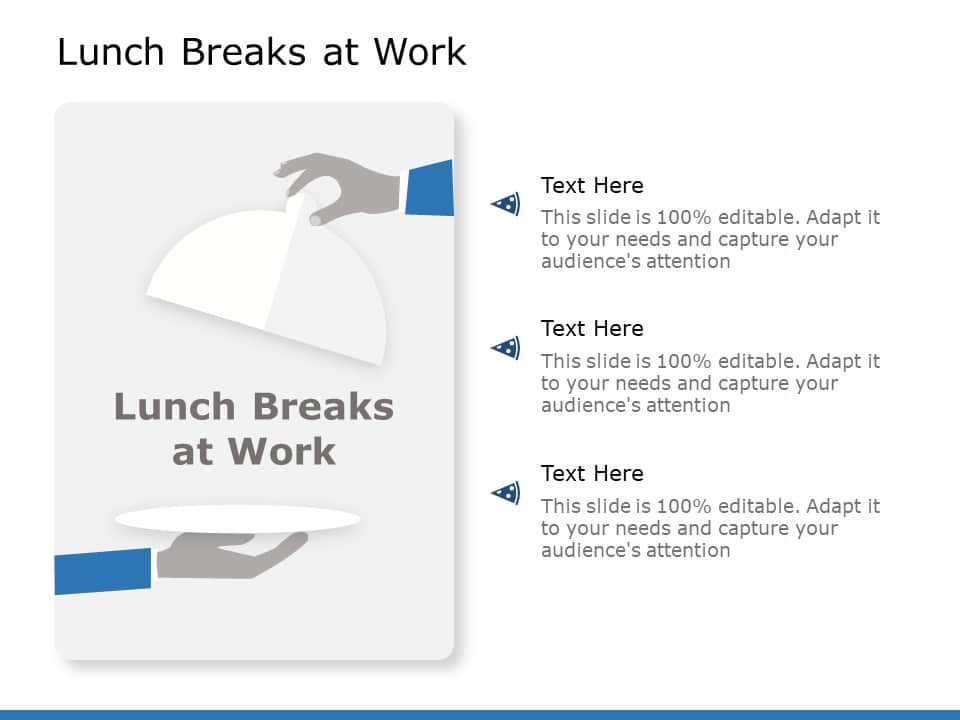
Luncheon Session PowerPoint Template
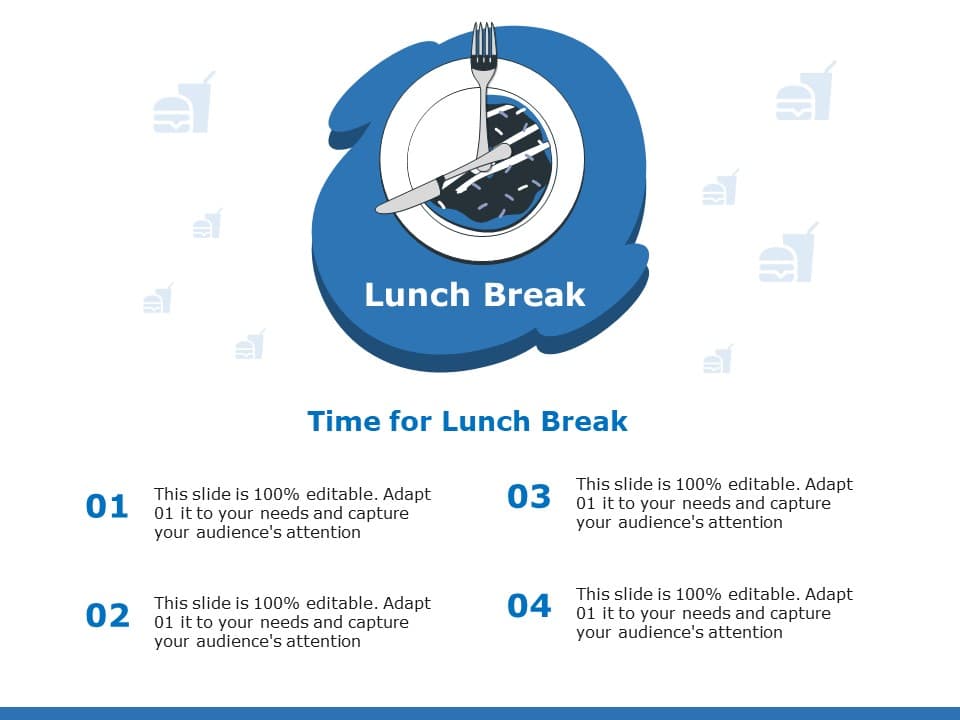
Lunch Session PowerPoint Template
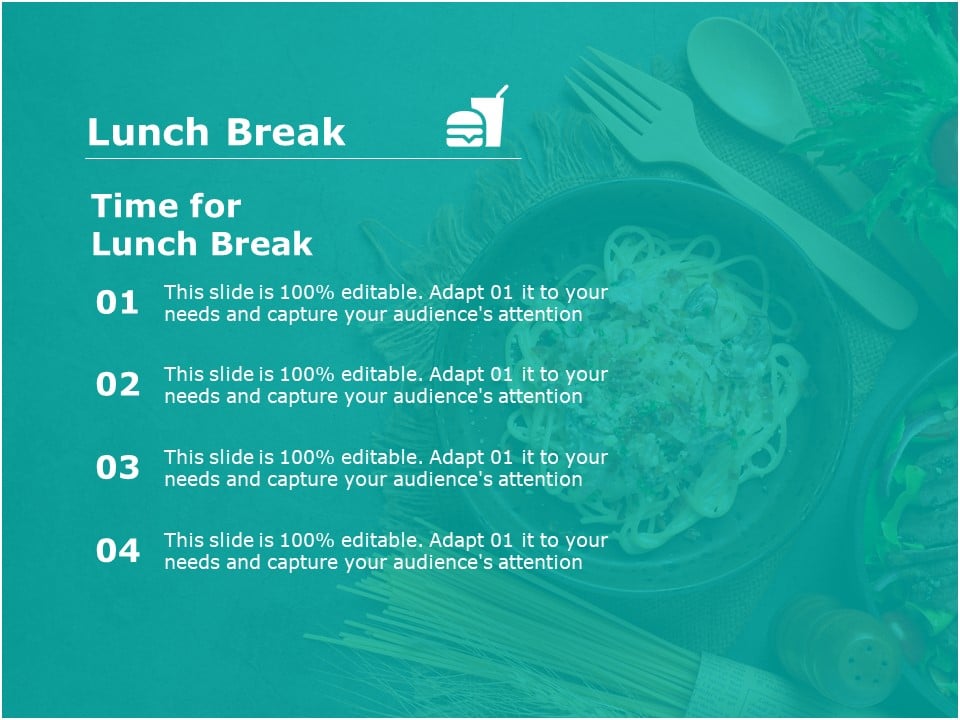
Lunch PowerPoint Template
Work life powerpoint templates for presentations:.
The Work Life PowerPoint templates go beyond traditional static slides to make your professional presentations stand out. Given the sleek design and customized features, they can be used as PowerPoint as well as Google Slides templates . Inculcated with visually appealing unique and creative designs, the templates will double your presentation value in front of your audience. You can browse through a vast library of Work Life Google Slides templates, PowerPoint themes and backgrounds to stand out in your next presentation.
What Is A Work Life PowerPoint Template?
A Work Life PowerPoint template is a ready-made presentation template that provides a structured framework for creating professional Work Life presentations. The Work Life PPT presentation template includes design elements, layouts, and fonts that you can customize to fit your content and brand.
What Are The Advantages Of Work Life Presentation Templates?
Work Life PPT presentation templates can be beneficial because they:
- Add multiple visual and aesthetic layers to your slides.
- Ensure that complex information, insights and data is presented in a simplistic way.
- Enhance the overall visual appeal of the content.
- Save you a lot of time as you don’t have to start editing from scratch.
- Improve the professional outlook of your presentation.
How To Choose The Best Work Life Presentation Templates?
Keep the following points in mind while choosing a Work Life Presentation template for PowerPoint (PPT) or Google Slides:
- Understand your presentation goals and objectives.
- Make sure the Work Life template aligns with your visual needs and appeal.
- Ensure the template is versatile enough to adapt to various types of content.
- Ensure the template is easily customizable.
Can I Edit The Elements In Work Life PowerPoint Templates?
Yes, our Work Life PowerPoint and Google Slides templates are fully editable. You can easily modify the individual elements including icons, fonts, colors, etc. while making your presentations using professional PowerPoint templates .
Are Work Life PowerPoint Templates Compatible With Google Slides?
Yes, all our Work Life presentation templates are compatible and can be used as Work Life Google Slides templates.
How To Download Work Life PowerPoint Templates For Presentations?
To download Work Life presentation templates, you can follow these steps:
- Select the resolution (16*9 or 4*3).
- Select the format you want to download the Work Life template in (Google Slides or PowerPoint).
- Make the payment (SlideUpLift has a collection of paid as well as free Work Life PowerPoint templates).
- You can download the file or open it in Google Slides.
Related Presentation Templates
Remote working.
8 templates
Employee Recognition
22 templates
Star Interview
5 templates
Human Resource
918 templates
95 templates
Forgot Password?
Privacy Overview
Necessary cookies are absolutely essential for the website to function properly. This category only includes cookies that ensures basic functionalities and security features of the website. These cookies do not store any personal information
Any cookies that may not be particularly necessary for the website to function and is used specifically to collect user personal data via ads, other embedded contents are termed as non-necessary cookies. It is mandatory to procure user consent prior to running these cookies on your website.
Work-Life Balance in Psychology: 12 Examples and Theories

We might be a professional, a parent, a partner, a sports person, a community member, a friend, a child.
Our roles and responsibilities differ for each role, and the challenge is to meaningfully satisfy these requirements with as little conflict as possible. This is known as work–life balance.
In this post, we explore the concept of work–life balance: what it is, why it’s important, and if it’s possible to achieve.
Before you continue, we thought you might like to download our three Happiness & Subjective Wellbeing Exercises for free . These detailed, science-based exercises will help you or your clients identify sources of authentic happiness and strategies to boost wellbeing.
This Article Contains:
What is work–life balance, 4 real-life examples, is balance important 3 benefits according to research, 8 psychology theories & models, is it possible to achieve work–life balance, work–life balance vs work–life integration, positivepsychology.com’s relevant resources, a take-home message.
Work–life balance (WLB) is a somewhat recent phenomenon, arising from employees’ concerns about the demands expected by their work (Guest, 2002). The perceived increase in these demands can be traced to three factors (Guest, 2002):
- Changes in the work environment
- Changes in life
- Changes in individual attitudes
History surrounding the concept of ‘work–life balance’
In the 1970s, the concept of WLB was initially framed as one concerning work–family balance (Lockwood, 2003). This was partly due to concerns surrounding women joining the workforce (Fleetwood, 2007). The workforce primarily comprised men, whereas women were often employed informally. However, when women could engage in formal employment, the result was that they had to juggle both work and family-life responsibilities.
However, the concept of WLB doesn’t affect women only.
For example:
- Men also play an essential role in child rearing.
- Men are not always the primary breadwinner in heterosexual couples.
- Gay couples also have to juggle both work and family-life responsibilities.
Furthermore, couples who do not have children and individuals who are not in relationships should not be excluded from issues around WLB.
Thus, societal pressures for equal labor opportunities and conditions, coupled with general shifts in industries and attitudes toward gender roles, resulted in more attention on WLB.
This is why the concept changed from work– family life balance to work– life balance, since our personal lives are not limited only to familial needs (Lockwood, 2003).
Other changes in the work environment have contributed to concerns about WLB.
- Technological advancements have increased work pressure.
- Deadlines have become increasingly tight.
- The expected response times for communication have become shorter.
- Expectations of superb customer service have become higher.
These changing work demands lead to inevitable changes in personal lives. For example, working overtime and on weekends leads to less time available to spend on personal life interests.
WLB has also been driven by changes in individual attitudes and values. One such example is how societal attitudes toward work and life have changed from one generation to the next (Thijssen, Van der Heijden, & Rocco, 2008; Wey Smola & Sutton, 2002). Specifically, the likelihood of remaining employed at one company has declined since the 1990s (Eby, Butts, & Lockwood, 2003). As a result, some workers may consider work as a separate, dynamic aspect of life that doesn’t require absolute commitment.
Definitions of WLB
There’s no cohesive, agreed-upon definition of work–life balance in the literature (Kalliath & Brough, 2008). However, the common understanding is that there are (at least) two domains in life: work and personal. Both domains require attention and investment, but not at the sacrifice of each other.
Kalliath and Brough (2008) provide the following set of statements that synthesize the various definitions of WLB provided in the literature:
- People perform different roles in their life, including a work role and a personal life role, and the demands of one role can carry over to the demands of another.
- People should be able to commit equal amounts of time and energy to all roles.
- People should feel satisfied with their own performance in various life domains and should function optimally in these domains. Their performance and function across life domains should not clash.
- The roles that people perform in their life and the importance they assign to these roles change. Therefore, satisfaction with WLB depends on which roles people have prioritized now and whether their expectations are met.
- WLB is achieved when there is little conflict between individuals’ work and personal roles.
- WLB is considered to be the degree of autonomy that people have over the demands of various roles and their ability to meet these demands.

Before becoming a professor at the University of Arkansas, Ryoichi Fujiwara was an academic in Japan. She shares the harmful physical symptoms that she experienced from overworking. She lost 22 pounds, was never hungry, couldn’t sleep, and was working every weekend.
At the advice of her doctor, she decided to start keeping regular work hours and avoiding overtime. She also started exercising regularly. After a few months, her appetite returned, and she has maintained a healthier work–life balance (Fujiwara, 2021).
Mohadeseh Ganji was the recipient of the Women Leading Tech Award for Data Science in 2020. She is aware that the nature of the job is to spend most of her working time in front of her computer.
To counter this, she makes an effort to be outdoors, even if only for a short period, and she tries to set boundaries around her working hours. Admittedly, sometimes she cannot maintain these boundaries, but she is aware of this and is always actively working to reinforce them (Fleetwood, 2021).
Monash University interviewed five women researchers at their university and asked them about the challenges that they experience in their jobs.
Most of the researchers touched on the idea of work–life balance, specifically juggling a heavy workload with family responsibilities. For example, Professor Andrea Reupert, Professor Jane Wilkinson, and Associate Professor Ruth Jeanes emphasized that:
- Sharing caregiving roles and responsibilities helps to ease stress experienced by working moms.
- Clear work–life boundaries with time dedicated to specific tasks helps achieve work–life balance (Allen, 2021).
Nigel Marsh worked in a corporate industry and experienced a common challenge: working too much with little time for his family. In his TEDx Talk , he gives his suggestions for what contributes to successful work–life balance.
In his often humorous talk, he argues that it’s difficult to achieve work–life balance, because core issues are not addressed.
These issues are:
- There is a societal emphasis on materialism.
- Individuals must be responsible for their own lives and must be allowed to set their own boundaries.
- Work–life balance isn’t achieved in a single day but could be achieved across a longer period of time.
- Balance means that multiple domains need to be attended to, and micro changes can have macro effects.
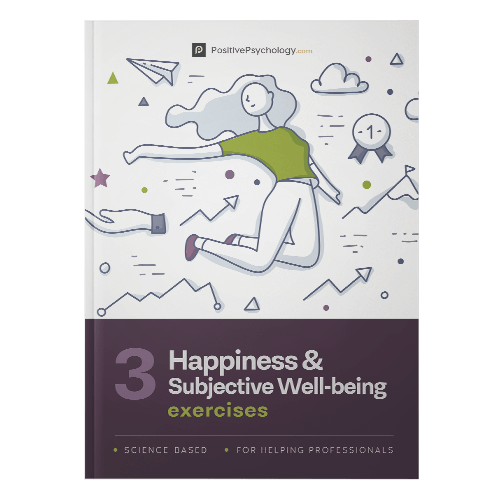
Download 3 Free Happiness Exercises (PDF)
These detailed, science-based exercises will equip you or your clients with tools to discover authentic happiness and cultivate subjective well-being.
Download 3 Free Happiness Tools Pack (PDF)
By filling out your name and email address below.
- Email Address *
- Your Expertise * Your expertise Therapy Coaching Education Counseling Business Healthcare Other
- Phone This field is for validation purposes and should be left unchanged.
Before heralding WLB as an optimal way of living, let’s first explore some assumptions about WLB within the extant literature.
Assumptions about work–life balance
The first two assumptions about WLB are that there are multiple domains in our lives, including work and personal, and that these domains can be separated (Eikhof, Warhurst, & Haunschild, 2007). However, the degree of separation differs among people and industries. For example, someone who runs a home business may find it more difficult to separate their work life from their personal life.
Another assumption is that we typically dedicate too much time and energy to the work domain. These resources are finite and can include time, energy, and motivation. The result of this imbalance is that we have too few resources to dedicate to other domains, specifically the personal domain (Eikhof et al., 2007).
Studies on WLB do not investigate an imbalance where too few resources are available for work.
Another assumption is that work is a negative domain that results in unhappiness, stress, and other negative states (Eikhof et al., 2007). Presumably, if a balance is struck between these two domains, then the negative effects of work are negated by the positive benefits of personal life. However, the WLB argument ignores how fulfilling and satisfying work can be (Eikhof et al., 2007).

Benefits of work–life balance
Achieving WLB benefits both work and personal lives (Chimote & Srivastava, 2013; Lockwood, 2003).
These benefits include:
- People have more time available to run personal errands, such as servicing cars, and address personal issues, such as going to the doctor. As a result, people are less likely to use work hours on non-work-related issues, use fewer sick days for personal errands, and can also look after themselves through regular medical checkups.
- People who have more time for their personal life report high job satisfaction and, as a result, are less likely to resign. They are also more motivated at work and more productive.
- Happier people who have high job satisfaction and more time for their personal life are less likely to develop illnesses and stress-related conditions.

One limitation of these theories is that the two domains are purposely considered to be separate constructs, and the people in the two domains are different. Therefore, these theories do not extend to situations where work is a family-run business (i.e., when your sibling is also your coworker).
The models are described below.
- Segmentation : The two domains – work and life – exist separately from each other, and there is no relationship between these two domains. Experiences in one domain do not affect experiences in the other.
- Spillover : Work and life domains are separate, but factors in one domain can affect the other. These effects can be negative or positive. Edwards and Rothbard (2000) provide the following definition: the behaviors, feelings, and values of the two domains become more similar.
- Compensation : Experiences and feelings in one domain can be used to make up or compensate for the gaps in another. A typical example is where dissatisfaction in one domain is negated by satisfaction in another. The process of compensation is an active and conscious decision (Edwards & Rothbard, 2000).
- Resource drain : Optimal functioning requires the availability of resources such as time, energy, and motivation. These resources, however, are finite. Sometimes, optimal functioning in one domain might require more resources from another. The transfer of resources is not considered an autonomous process, like in the compensation model (Edwards & Rothbard, 2000).
- Instrumental : The choices in one domain allow for maximum success in another.
- Congruence : Due to the presence of a third variable, the experiences across domains are similar. Examples of these third variables are individual qualities, such as personality or coping styles, or external factors, such as social influences.
- Conflict : The choices and needs of all domains compete for our limited resources, causing stress and/or unhappiness. As a result, our roles across various domains conflict with each other. Conflict may include reduced functioning in personal life due to work pressures (known as work–family conflict); it can also be the other way around, where family pressures impair occupational functioning and performance (known as family–work conflict; Bakker & Demerouti, 2013).
- An eighth theory, the spillover-crossover model , was posited by Bakker and Demerouti (2013). They argue that positive or negative experiences in one domain can spill over to another, but their effects can cross over and impact the wellbeing of other people.
Admittedly, the jury is still out on this question.
Some researchers and professionals have reservations about whether it is possible to achieve WLB (McCormack & Niehoff, 2019).
Although the definition of WLB has its shortcomings, there is enough research to suggest the following:
- It is possible to increase employee job and life satisfaction by improving workplace conditions.
- Stress can affect life satisfaction.
- Healthy WLB can positively affect health (Jones, Burke, & Westman, 2013).
The aim is not to treat WLB as a single goal, which, once achieved, is ignored and never addressed again. Instead, consider WLB to be a kinetic balancing toy.
Sometimes the balance will shift toward work; sometimes it will shift toward personal life. The point is to be aware of feelings about work and personal life and to engage in behaviors that will buttress against the negative effects of stress and of the scale shifting too much toward one particular life domain.
Another consideration is that WLB is not a universal, absolute value. In other words, two people can achieve balance in different ways and at different points along the work–life spectrum.
Reiter (2007) makes a convincing argument that ‘balance’ is subjective; instead of striving toward an absolute value of WLB, it is better to strive toward optimal functioning within different life domains with as little conflict as possible between them.

Work–life integration challenges some assumptions of the typical argument of WLB, specifically that work and personal life are separate domains.
Work–life integration is considered the midpoint between zero and complete segmentation of work and personal life (Morris & Madsen, 2007).
One unique contribution that work–life integration brings to the debate surrounding WLB is the function that the community can play. Researchers who promote work–life integration argue that people in the work, personal life, and community domains can work together to help one another achieve their goals in each domain.
Unfortunately, these same people can also impair success in various life domains. As a result, work–life integration can be considered as an ecosystem containing different people with different roles, and their actions with one another in multiple domains can help or hinder successful work–life integration.
Morris and Madsen (2007) argue that for successful work–life integration, people should consider the following points that can contribute to success and happiness across domains:
- Identifying, addressing, and supporting role demands in various life domains
- Identifying, addressing, and supporting relationship demands in various life domains
- Identifying, addressing, and supporting different responsibilities in various life domains
- Outlining a set of rules about behavior in various life domains but also identifying different responses to these rules and clarifying whether these rules are malleable or concrete
- Identifying the rituals (i.e., structured behaviors that are expected) in different domains and addressing whether these rituals hinder or help domain success
- Identifying the resources that are needed to achieve domain success but also assessing the availability of resources in each domain
Consider this example: Bjorn is newly wed and a new parent. He often works long hours at the local pharmacy. By coming home late, he has less time to spend with his wife and their new baby, and consequently he cannot offer as much emotional support to his wife as he would like. Bjorn is unhappy, and there is some tension between him and his wife; as a result, Bjorn feels angry toward his boss.
Work–life integration theory argues that people are not limited to their roles within only one particular domain; their actions in one domain can affect others.
Therefore, Bjorn’s employers and colleagues must recognize their role in his performance in other domains and put into place certain systems that can lead to optimal functioning in other domains.
Examples would include:
- Recognizing that the long hours are causing tension between Bjorn and his wife
- Recognizing that having a newborn is a stressful experience in general
- Allowing Bjorn to take parental leave
- Allowing Bjorn to work flexible hours so that he can help at home and make up the lost time in other ways
- Allowing Bjorn to take leave in order to take his baby to the doctor or run errands
- Organizing social events so that Bjorn and his wife can meet his colleagues and get advice from other experienced parents
- Communicating clear deadlines and tasks so that Bjorn knows that he is still on track at work and contributing meaningfully
- Communicating clearly with Bjorn if superiors/colleagues feel Bjorn is struggling to meet his deadlines
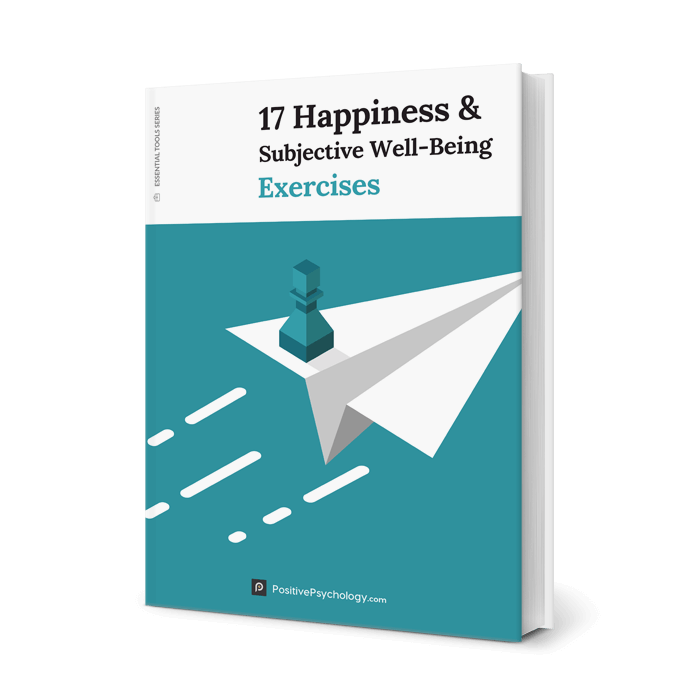
17 Exercises To Increase Happiness and Wellbeing
Add these 17 Happiness & Subjective Well-Being Exercises [PDF] to your toolkit and help others experience greater purpose, meaning, and positive emotions.
Created by Experts. 100% Science-based.
We have several tools that can help your client achieve WLB, and a great start is this coaching article – Coaching on Work–Life Balance: 11 Strategies & Questions with practical strategies.
A highly recommended worksheet is Meeting Needs With Reality Therapy . This worksheet helps clients understand their needs and what actions they could take to meet them.
This tool can be used repeatedly with the same client at various stages of their life because their needs and life circumstances will change with time. The tool takes 20 minutes and could be completed in-session or at home.
If your client approaches you after a negative experience, then you could consider using the Vicious Versus Virtuous Stress Thinking worksheet. In this worksheet, clients can use a table to consider unhelpful versus helpful thinking regarding an event.
This tool is very helpful for clients who may struggle with stress that is perpetuated by negative (vicious) cycles of thinking. Clients learn a useful technique to reframe unhelpful beliefs and thinking and adopt a virtuous cycle of thinking to make the best of what is outside and inside their control.
If you’re looking for more science-based ways to help others develop strategies to boost their wellbeing, this collection contains 17 validated happiness and wellbeing exercises . Use them to help others pursue authentic happiness and work toward a life filled with purpose and meaning.
Maintaining work–life balance is a continuous lifelong process, and the balance will tilt toward different domains. This tilting is normal; sometimes we need to give more to work, other times to family.
The goal is not to ‘achieve’ work–life balance, because this implies that there is some type of finality to the journey. Balance achieved? Check. Move on.
Instead, the journey toward WLB is dynamic, requires regular reflection, and is different for each person. Therefore, the goal is to be aware of the different roles that we are balancing and to evaluate whether we are meeting those responsibilities in a way that we are satisfied with. Through self-evaluation and self-awareness, we learn more about what balance means to us.
We hope you enjoyed reading this article. Don’t forget to download our three Happiness Exercises for free .
- Allen, K. (2021, March 2). International Women’s Day 2021: The realities of being a woman at the top of academia. Lens . Retrieved March 3, 2021, from https://lens.monash.edu/@education/2021/03/02/1382904/iwd-2021-the-realities-of-being-a-woman-at-the-top-of-academia
- Bakker, A. B., & Demerouti, E. (2013). The spillover-crossover model. In J. G. Grzywacz & E. Demerouti (Eds.), Current issues in work and organizational psychology. New frontiers in work and family research (pp. 54–70). Psychology Press.
- Chimote, N. K., & Srivastava, V. N. (2013). Work-life balance benefits: From the perspective of organizations and employees. IUP Journal of Management Research , 12 (1), 62–73.
- Eby, L. T., Butts, M., & Lockwood, A. (2003). Predictors of success in the era of the boundaryless career. Journal of Organizational Behavior: The International Journal of Industrial, Occupational and Organizational Psychology and Behavior , 24 (6), 689–708.
- Edwards, J. R., & Rothbard, N. P. (2000). Mechanisms linking work and family: Clarifying the relationship between work and family constructs. Academy of Management Review , 25 (1), 178–199.
- Eikhof, D. R. , Warhurst, C., & Haunschild, A. (2007). Introduction: What work? What life? What balance? Critical reflections on the work-life balance debate. Employee Relations , 29 (4), 325–333.
- Fleetwood, C. (2021, March 3). Mohadeseh Ganji reveals how she balances screen time with everyday life. B&T Magazine. Retrieved March 3, 2021, from https://www.bandt.com.au/mohadeseh-ganji-phd-reveals-how-she-balances-screen-time-with-everyday-life-more/
- Fleetwood, S. (2007). Why work–life balance now? The International Journal of Human Resource Management , 18 (3), 387–400.
- Fujiwara, R. (2021, February 11). Overworking tanked my health—until I began to prioritize work-life balance. Science. Retrieved March 3, 2021, from https://www.sciencemag.org/careers/2021/02/overworking-tanked-my-health-until-i-began-prioritize-work-life-balance
- Jones, F., Burke, R. J., & Westman, M. (Eds.). (2013). Work-life balance: A psychological perspective . Psychology Press.
- Guest, D. E. (2002). Perspectives on the study of work-life balance. Social Science Information , 41 (2), 255–279.
- Kalliath, T., & Brough, P. (2008). Work-life balance: A review of the meaning of the balance construct. Journal of Management & Organization , 14 (3), 323–327.
- Lockwood, N. R. (2003). Work/life balance: Challenges and solutions. Society for Human Resource Management.
- McCormack, B. M., & Niehoff, L. (2019, October 17). There is no work-life balance. Litigation Journal. Retrieved from https://www.americanbar.org/groups/litigation/publications/litigation_journal/2019-20/fall/there-no-worklife-balance/
- Morris, M. L., & Madsen, S. R. (2007). Advancing work—life integration in individuals, organizations, and communities. Advances in Developing Human Resources , 9 (4), 439–454.
- Reiter, N. (2007). Work life balance: What do you mean? The ethical ideology underpinning appropriate application. The Journal of Applied Behavioral Science , 43 (2), 273–294.
- Thijssen, J. G., Van der Heijden, B. I., & Rocco, T. S. (2008). Toward the employability—link model: Current employment transition to future employment perspectives. Human Resource Development Review , 7 (2), 165–183.
- Wey Smola, K., & Sutton, C. D. (2002). Generational differences: Revisiting generational work values for the new millennium. Journal of Organizational Behavior: The International Journal of Industrial, Occupational and Organizational Psychology and Behavior , 23 (4), 363–382.
Share this article:
Article feedback
What our readers think.
This article is helpful as I am running 3 services – helpline, counselling and mentoring. These exercises is going to be helpful any of these clients in our services. Thank you
Let us know your thoughts Cancel reply
Your email address will not be published.
Save my name, email, and website in this browser for the next time I comment.
Related articles

Embracing JOMO: Finding Joy in Missing Out
We’ve probably all heard of FOMO, or ‘the fear of missing out’. FOMO is the currency of social media platforms, eager to encourage us to [...]

The True Meaning of Hedonism: A Philosophical Perspective
“If it feels good, do it, you only live once”. Hedonists are always up for a good time and believe the pursuit of pleasure and [...]

Happiness Economics: Can Money Buy Happiness?
Do you ever daydream about winning the lottery? After all, it only costs a small amount, a slight risk, with the possibility of a substantial [...]
Read other articles by their category
- Body & Brain (49)
- Coaching & Application (57)
- Compassion (26)
- Counseling (51)
- Emotional Intelligence (24)
- Gratitude (18)
- Grief & Bereavement (21)
- Happiness & SWB (40)
- Meaning & Values (26)
- Meditation (20)
- Mindfulness (45)
- Motivation & Goals (45)
- Optimism & Mindset (34)
- Positive CBT (29)
- Positive Communication (20)
- Positive Education (47)
- Positive Emotions (32)
- Positive Leadership (18)
- Positive Parenting (4)
- Positive Psychology (33)
- Positive Workplace (37)
- Productivity (17)
- Relationships (46)
- Resilience & Coping (36)
- Self Awareness (21)
- Self Esteem (38)
- Strengths & Virtues (32)
- Stress & Burnout Prevention (34)
- Theory & Books (46)
- Therapy Exercises (37)
- Types of Therapy (64)

- Name This field is for validation purposes and should be left unchanged.
3 Happiness Exercises Pack [PDF]
Got any suggestions?
We want to hear from you! Send us a message and help improve Slidesgo
Top searches
Trending searches

68 templates

cybersecurity
6 templates

19 templates

58 templates

18 templates
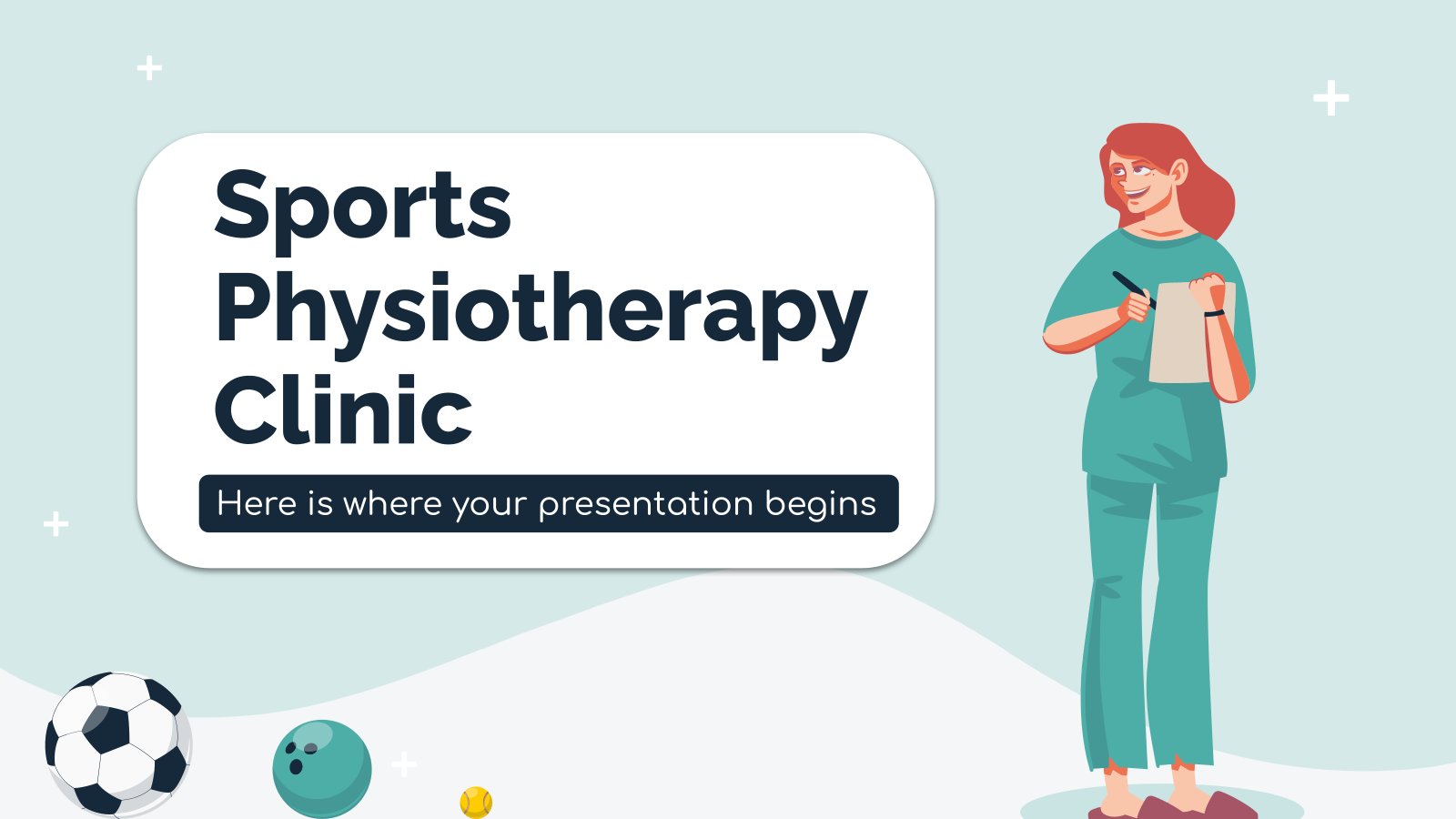
physiotherapy
14 templates
Work-Life Balance Thesis Defense
Work-life balance thesis defense presentation, free google slides theme and powerpoint template.
In order to have a productive life, both at home and at your workplace, you must attain a work-life balance. Do you need a presentation to talk about this matter, and more specifically during a thesis defense or similar? You'll be glad to use this template, because eye-catching it is! The slide design might remind you of magazine ads, with lots of globes, striking colors and a vintage-looking font for titles, but it also contains some shapes that look more like an interface. If you were afraid of having your content go unnoticed, this is the solution!
Features of this template
- 100% editable and easy to modify
- 26 different slides to impress your audience
- Available in five colors: blue, orange, purple, green and red
- Contains easy-to-edit graphics such as graphs, maps, tables, timelines and mockups
- Includes 500+ icons and Flaticon’s extension for customizing your slides
- Designed to be used in Google Slides and Microsoft PowerPoint
- 16:9 widescreen format suitable for all types of screens
- Includes information about fonts, colors, and credits of the free resources used
How can I use the template?
Am I free to use the templates?
How to attribute?
Attribution required If you are a free user, you must attribute Slidesgo by keeping the slide where the credits appear. How to attribute?
Available colors.
Original Color
Related posts on our blog

How to Add, Duplicate, Move, Delete or Hide Slides in Google Slides

How to Change Layouts in PowerPoint

How to Change the Slide Size in Google Slides
Related presentations.

Premium template
Unlock this template and gain unlimited access


Powerpoint Templates
Icon Bundle
Kpi Dashboard
Professional
Business Plans
Swot Analysis
Gantt Chart
Business Proposal
Marketing Plan
Project Management
Business Case
Business Model
Cyber Security
Business PPT
Digital Marketing
Digital Transformation
Human Resources
Product Management
Artificial Intelligence
Company Profile
Acknowledgement PPT
PPT Presentation
Reports Brochures
One Page Pitch
Interview PPT
All Categories

Work life balance example powerpoint templates
Avail this work life balance example PowerPoint templates presentation which has been crafted by our professional designers for the purpose of presenting and demonstrating the prominent factors which plays a vital role in a person's life and are required to be considered to maintain balance and stability to perform well and efficiently in both professional and personal life. The design of this professional life equilibrium illustration makes it unique and distinct being a compilation of all the essential ingredients which can be avail by all kinds of professionals and that too at all future times to come by reusing this slideshow whenever needed. In short it can be said that you can get rid of those vintage presentations styles and enhance the shine of your presentation skills and win appreciations by using this statistics of balanced career. Undoubtedly, the components and graphics of this job forces balance example PPT slide will provide you overall benefits including explaining your concept(s) to your viewers and audience more clearly and illustratively. Identify the exact formula with our Work Life Balance Example Powerpoint Templates. Create the equation that you desire.
Avail this work life balance example PowerPoint templates presentation which has been crafted by our professional designers..
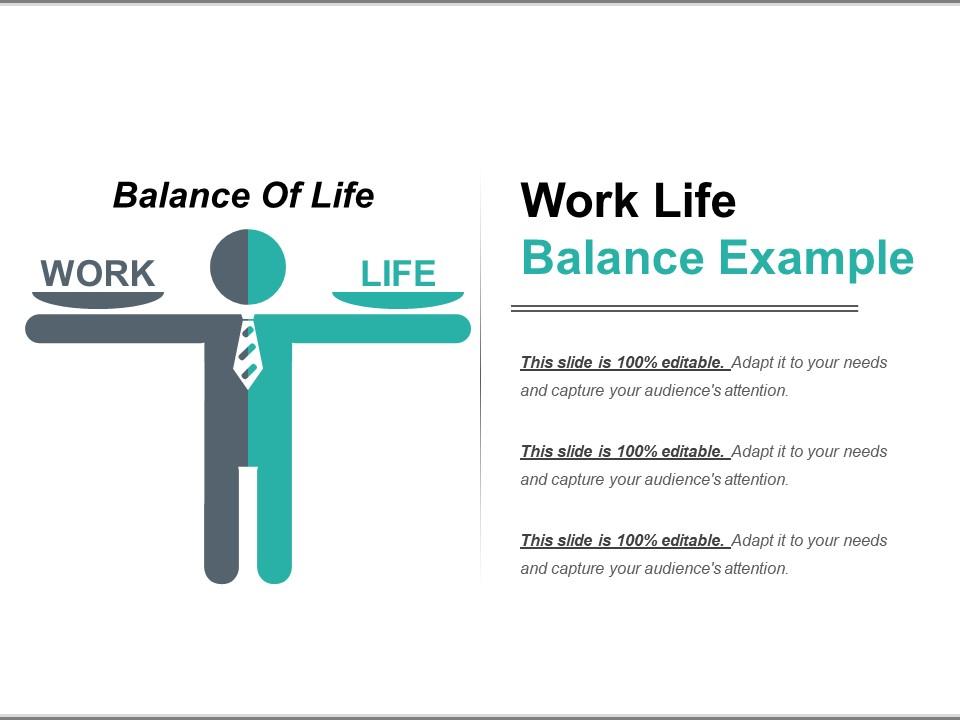
These PPT Slides are compatible with Google Slides
Compatible With Google Slides

- Google Slides is a new FREE Presentation software from Google.
- All our content is 100% compatible with Google Slides.
- Just download our designs, and upload them to Google Slides and they will work automatically.
- Amaze your audience with SlideTeam and Google Slides.
Want Changes to This PPT Slide? Check out our Presentation Design Services
Get Presentation Slides in WideScreen
Get This In WideScreen
- WideScreen Aspect ratio is becoming a very popular format. When you download this product, the downloaded ZIP will contain this product in both standard and widescreen format.

- Some older products that we have may only be in standard format, but they can easily be converted to widescreen.
- To do this, please open the SlideTeam product in Powerpoint, and go to
- Design ( On the top bar) -> Page Setup -> and select "On-screen Show (16:9)” in the drop down for "Slides Sized for".
- The slide or theme will change to widescreen, and all graphics will adjust automatically. You can similarly convert our content to any other desired screen aspect ratio.
- Add a user to your subscription for free
You must be logged in to download this presentation.
Do you want to remove this product from your favourites?
PowerPoint presentation slides
Presenting work life balance example Powerpoint templates which is 100% editable. The inserted features in this PPT are easy with changes and all the features used in this PowerPoint presentation are compatible with Google Slides, multiple format and software options. This PPT is easy to download in a very short span of time. In case of any assistance, the user or presenter can refer to presentation designs services being provided along with this PowerPoint presentation. All kinds of professionals can take the benefit of this presentation with ease.

People who downloaded this PowerPoint presentation also viewed the following :
- Diagrams , Management , Business Slides , Human Resource Management
- Work And Leisure ,
- Work Life Balance ,
- Career And Ambition
Work life balance example powerpoint templates with all 5 slides:
There may be many who differ with you. Increase agreement with our Work Life Balance Example Powerpoint Templates.

Ratings and Reviews
by Johnson Morris
June 20, 2021
by Coleman Henderson
June 18, 2021

- SUGGESTED TOPICS
- The Magazine
- Newsletters
- Managing Yourself
- Managing Teams
- Work-life Balance
- The Big Idea
- Data & Visuals
- Reading Lists
- Case Selections
- HBR Learning
- Topic Feeds
- Account Settings
- Email Preferences
Work-Life Balance Is a Cycle, Not an Achievement
- Mayra Ruiz-Castro

A five-step approach to identify and overcome unhealthy work habits.
Research has definitively shown that overwork isn’t good for employees or their companies — and yet, in practice, it can be hard to overcome unhealthy work habits and reach a more sustainable work-life balance. To explore what it takes for busy professionals to make a change for the better, the authors conducted a series of interviews with mid- and senior-level managers at two global firms. They found that while the majority of respondents assumed working long hours was inevitable, a significant minority of them were able to resist this pressure and achieve a healthier balance through a process of increasing awareness, conscious reprioritizing, and implementation of public and private changes. The authors go on to emphasize that to achieve lasting change, you must view this process not as a one-time activity, but as a cycle in which you constantly re-evaluate your evolving feelings and priorities, and adjust your work and life choices accordingly.
Despite the resounding evidence that working long hours can be harmful to both employees and employers, many professionals still struggle to overcome their assumptions — and their deeply-ingrained habits — around work hours. What does it take to free yourself from these unhealthy patterns and reach a more sustainable, rewarding work-life balance?
- IL Ioana Lupu is an Associate Professor at ESSEC Business School France. She is interested in overwork, work-compulsion & performance measurement in knowledge-intensive settings, such as audit, consulting, and law firms. Follow her on LinkedIn and Twitter @lupu_io.
- MR Mayra Ruiz-Castro is a Senior Lecturer at the University of Roehampton, UK. Her research focuses on equality at work and at home. Follow her on LinkedIn and Twitter at @MayraRuizCastr1.
Partner Center

- My presentations
Auth with social network:
Download presentation
We think you have liked this presentation. If you wish to download it, please recommend it to your friends in any social system. Share buttons are a little bit lower. Thank you!
Presentation is loading. Please wait.
Work Life Balance (WLB)
Published by Christian Miller Modified over 6 years ago
Similar presentations
Presentation on theme: "Work Life Balance (WLB)"— Presentation transcript:
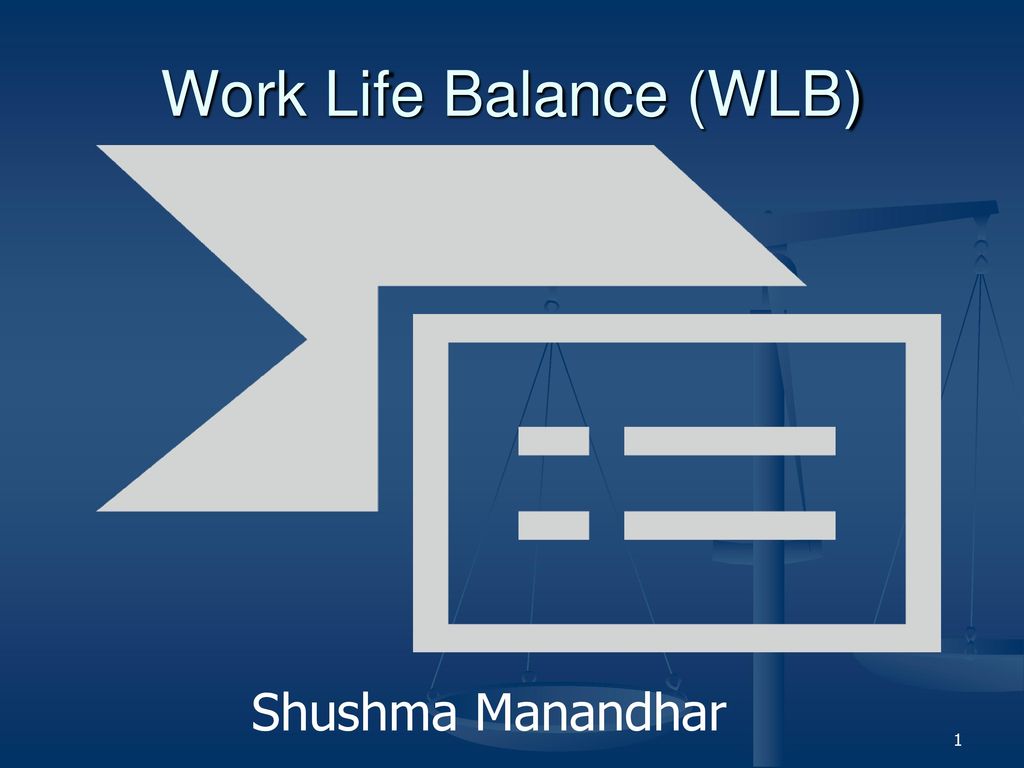
Balancing Home, Family and Work Home Family Work.

STRESS MANAGEMENT. Have experienced in these situations? Unexpected death Unexpected death Witnessing an accident Witnessing an accident Sudden loss of.

STRESS MANAGEMENT.

Being A Professional Managing Time and Career Information gathered by Lucy Campanis Revised by Mikki Meadows EIU School of Family & Consumer Sciences.

Equal opportunity/ADA institution Changing Roles Building Strong Families – Balancing Responsibilities Overhead #1A.

Having Balance in Your Life. Is Your Life in Balance Quiz? Directions: Answer true or false to each statement below. 1.I find myself spending more and.

Professor, Dr. Corinne B. Young The University of Tampa Wirtschaftsuniversität Wien May 15, 2002.

External time wasters: Unscheduled Visitors Socializing Papers and correspondence Telephone interruptions Lack of information Excessive paperwork Communication.

Welcome to Eight Skills for the Effective Online Criminal Justice Student!! Unit 2 Seminar: Time Management.

WORK LIFE BALANCE Anuradha Sarin Anuradha Sarin Sangeeta Relan Sadhna Gupta Anju Aggarwal Gaurav Sharma.

Module 6 The Role of Support Workers and Self Care.

HEALTHY vs. UNHEALTHY RELATIONSHIPS

Mental & Emotional health

Caregivers Are Important - How to Take care of Ourselves?

Managing Stress at Work

Warm Up List and explain/describe 5 ways that you think you will need to change from your current self to adapt to working with other professionals.

Employability Skills.

Preparing For Parenthood

Money in Your Life Advanced Level.

Decision Making Styles
About project
© 2024 SlidePlayer.com Inc. All rights reserved.
- Starting a Business
- Growing a Business
- Small Business Guide
- Business News
- Science & Technology
- Money & Finance
- For Subscribers
- Write for Entrepreneur
- Entrepreneur Store
- United States
- Asia Pacific
- Middle East
- South Africa
Copyright © 2024 Entrepreneur Media, LLC All rights reserved. Entrepreneur® and its related marks are registered trademarks of Entrepreneur Media LLC
You Won't Achieve a Work-Life Balance Without Doing These 10 Things Reach the perfect balance between work and life by following these strategies.
By Jessica Fisher • Apr 25, 2024
Key Takeaways
- By implementing these strategies, you will quickly understand the importance of prioritizing your well-being.
Opinions expressed by Entrepreneur contributors are their own.
It is challenging for business owners to balance career and personal life . Taking a step back from work can feel stressful, and you may worry that everything will fall apart if you aren't constantly tuned into every aspect of your company. However, it is essential to set aside time for yourself because overworking will lead to burnout, which may result in less efficiency when you're on the clock.
Ultimately, a solid work-life balance aims to set your daily life up so that you can completely unplug during off-hours. Don't let your business overshadow your personal life. Set aside time for family, self-care and hobbies. If you're seeking strategies to achieve this balance, follow these essential tips below.
Related: The Definitive Guide To Achieving Work-Life Balance
1. Delegate tasks to your team
An easy way to begin your work-life balance setup is to pass tasks to your team. Delegating effectively and understanding that you don't have to manage every aspect of your business personally is one of the best strategies for alleviating stress in your career. By giving your workers more duties, you will not only lighten your load but also boost your team's morale. They will appreciate that you trust them enough to give them some of your essential work, encouraging them to work harder.
2. Define your priorities and set boundaries
Next, it's time to define your priorities and set boundaries. What does an ideal work-life balance look like for you? For some people, it seems like spending more time with family and friends; for others, it's having time to dedicate to hobbies. In addition to defining work-life balance, you should start practicing the word 'no.' It's very easy for business owners to accept more and more work, but this hinders your ability to balance work and personal life. When a new opportunity comes by, consider it before accepting it to prevent your plate from getting too full.
3. Establish beneficial routines
Having a routine will help solidify your work-life balance. Routines are habitual daily activities, they can vary on a day-to-day basis, but should follow a pattern. Having this pattern in place will help you complete tasks more efficiently. One strategy you could implement is writing a list of tasks you'd like to complete each day and cross off items as you complete them, which should give you a boost of motivation.
Related: Here's Why Learning to Say No Can Skyrocket Your Business
4. Prioritize self-care
As a business owner, making time for yourself is often a low priority. But taking care of your body and mind will allow you to not only live a more balanced life but also maintain health and keep you in tip-top shape for your work days. It is important to make physical activity, good food and ample sleep part of your life. You should also dedicate one hour each week to doing something that pampers your spirit, like getting a pedicure, massage or going shopping.
5. Disconnect after hours
As a business owner, it's likely you receive emails and calls throughout the day and evening. Clients and colleagues may work different hours and may send you correspondence at inopportune times. Rather than reading these emails right away, save them for your working hours. There should be a time each day when you set your phone on 'Do Not Disturb,' eliminating the alerts and sending calls to voicemail. Although you might feel disturbingly disconnected, having your 'after-hours' time to yourself means you can truly relax and reset.
Related: How to Disconnect in Order to Do Your Best Work
6. Implement email auto-responders
If you continue to feel unsettled having your 'Do Not Disturb' on, or if your business receives frequent emails, it may be beneficial to set up auto-responses. You can set up a simple reply, letting your clients and coworkers know when you are away from the computer and when they can expect you to return. This should also lessen the amount of emails you receive while you're away, as those who received the email will know you are out of the office.
7. Take regular vacations
Vacations are difficult for many entrepreneurs to take, but taking them will allow you to have a complete reset and may even inspire you with new ideas for your business. Getting out into the world and exploring new areas will open your mind, and being away from work will help you access different thought processes, potentially giving you new motivation for when you return to the office. But even if you don't return with new ideas, you'll definitely return with a fresh mind. Just remember to disconnect as much as possible while you're gone, putting on an auto-responder and allowing your team to take on more responsibilities.
Related: How to Set Boundaries and Take a Break
8. Pursue a hobby
Hobbies like writing, hiking, painting, pottery or acting (or anything fun and unrelated to your business) will encourage you to take time away from work. Finding something you enjoy doing outside of business will help you relax and engage a different part of your brain. Pick a hobby that excites you and allows you to feel in the moment.
Related: 8 Ways a Hobby Makes You Better at Your Day Job
9. Dedicate family and friends time
There's a reason people emphasize the importance of community in a healthy life. Humans are social beings, and we need to make time for our personal relationships if we are to thrive. Having a set time for family and friends will help you remember to prioritize them. To make this time even more exciting, you can think of fun activities to do with the people you love, like going to the beach, having dinner together or exploring a new part of town.
10. Regularly review and adjust your balance
As you establish your work-life balance, you should regularly evaluate it and adjust it to your needs as they change. Business responsibilities will shift, as will life, and these moments require you to adjust. Keep checking in with yourself and your daily activities. If you find yourself spending too much time working or thinking about work, you will know it's time to start prioritizing your personal time.
Having a work-life balance that makes you feel productive at work and relaxed during your off-hours is ideal. It will help you not only be a better business owner but also a better friend, partner, family member and colleague. Feeling less stressed makes you more efficient and helps you accomplish more during your work hours.
Entrepreneur Leadership Network® Contributor
CEO of Top Agent Magazine
Want to be an Entrepreneur Leadership Network contributor? Apply now to join.
Editor's Pick Red Arrow
- James Clear Explains Why the 'Two Minute Rule' Is the Key to Long-Term Habit Building
- They Designed One Simple Product With a 'Focus on Human Health' — and Made $40 Million Last Year
- Lock Younger Americans Don't Necessarily Want to Retire in Florida — and the 2 Affordable States at the Top of Their List Might Surprise You
- I Tried Airchat , the Hottest New Social Media App in Silicon Valley — Here's How It Works
- Lock This Side Hustle Is Helping Farmers Earn Up to $60,000 a Year While Connecting Outdoor Lovers With Untouched Wilderness
- Are Franchises in the Clear After the Expanded Joint Employer Rule Was Struck Down? Industry Experts Answer 2 Critical Questions About What's Next.
Most Popular Red Arrow
Elevate eating for your pet with this discounted feeder bowl set.
Chow Down is made of sturdy material that's well designed to for any home or office.
'Highway Robbery': Burger Chain Slammed for 'Out of Control' Prices Amid Inflation
A Five Guys receipt is going viral on social media.
Increase Your iPad Productivity with This Magic Keyboard for Just $95
Save more than 60% on this keyboard that's designed to work with the iPad 10th Gen, but only through April 30th.
63 Small Business Ideas to Start in 2024
We put together a list of the best, most profitable small business ideas for entrepreneurs to pursue in 2024.
Elon Musk Reveals His Tactics for Building Successful Companies, Including Sleeping Under His Desk and 'Working Every Waking Hour'
Musk shared the secrets on a podcast with Nicolai Tangen, CEO of the $1.6 trillion Norges Bank.
Gear up for Summer Camping with $22 Off This Power Bank Flashlight
Planning weekends outdoors this summer? Don't do it without this light.
Successfully copied link
Skip to main content
- Skip to main menu
- Skip to user menu

Here’s How the Best Workplaces Encourage Work-Life Balance
Published: Apr 16, 2024 By Bob Helbig
Even employees who feel supported by their managers in a quest for work-life balance need something more.
That’s the crux of a n analysis by the Top Workplaces Research Lab, which found that 87 percent of employees say managers respect work-life boundaries while only 60 percent of employees feel they can take time off without falling behind.
Work-life balance matters more than ever, particularly with employees who prefer remote work but struggle to keep it from bleeding into their personal lives. A recent analysis by Energage of 36,000 employees shows:
- 88 percent feel comfortable discussing scheduling needs with managers.
- 87 percent say managers respect work-life boundaries.
- 84 percent say managers support work-life balance.
- 68 percent can disconnect during non-work hours.
- 65 percent can complete their work without extra hours.
- 60 percent can take time off from work without falling behind.
Responders said self-imposed expectations and heavy workloads are the biggest obstacles to work-life flexibility. One in three also felt their companies tend to reward employees for coming in early, staying late, and working weekends. Worth noting, it’s not only front-line workers who struggle. Responders believe leaders and managers have the toughest time with work-life balance. Senior leaders struggle the most, the analysis found.
These best practices can help encourage a workplace environment that supports work-life balance:
Review company policies: Rules around vacation, sick time, scheduling, and other time off can have unnecessary obstacles. Review policies for opportunities to simplify, streamline, and otherwise improve.
Consider what the workplace culture conveys: Messaging the importance of work-life balance is good, but what does your culture reward? If promotions typically go to those burning the midnight oil, your organization might be sending mixed messages about what is valued.
Assess staffing needs: While keeping a low overhead is important, employee well-being must also be a priority. Review staff levels across the organization to ensure one employee’s vacation doesn’t burden employees who are covering for them. If that is happening, it can create an atmosphere of resentment.
Manage meeting times: When folks try to schedule a large meeting, especially at the last minute, doing so might create problems. Lunchtime meetings, early meetings, and late meetings also can interfere with employees’ non-working hours. Avoid them. For employers looking to go further, here are some other tips on creating a positive culture for work-life balance:
- Consider flexible work arrangements : Flexible schedules, remote work options, and hybrid models can accommodate individual needs and preferences.
- Offer additional time off: Give workers additional time to recharge their batteries with more paid holidays, half days before long weekends, summer Fridays, or extra days off for birthdays or wellness.
- Give mental-health and well-being support: Provide resources for counseling or stress reduction, mental health days, and encourage employees to prioritize self-care.
- Implement family-friendly policies : Programs that support childcare and adult care needs, and even ones that allow pets at the office, can support employees and reduce stress.
- Communicate and set expectations: Provide clear communication regarding work hours, meetings, and availability. Consider implementing automated reminders for managers to respect time off and encourage employees to unplug during vacations.
Here’s another suggestion that can help employees who struggle: Place transition work blocks on the calendar before and after paid time off. This allows time to prepare to be off and time to catch up upon return.
Bob Helbig is media partnerships director at Energage, a Philadelphia-based employee survey firm. Energage is The Washington Post’s survey partner for Top Workplaces. To nominate your company as a Top Workplace, go to https://www.washingtonpost.com/nominate .
The trusted source for DC's Employers
Sign up and post a job now
Back to listing
The Washington Post Jobs Newsletter
Subscribe to the latest news about DC's jobs market
Washington Post Jobs Recommends:
3 Employee Nightmares and How to Banish Them
3 keys to unlock the power of employees
What if my grandpa was my boss?
At Work, Happiness Is an Outcome, Not A Goal

IMAGES
VIDEO
COMMENTS
Download Achieve Work-Life Balance Example PPT Templates. Template 4. This is another work-life balance template that includes a thoughtful roadmap covering various initiatives such as flexible leaves, holidays, wellness programs, productivity measures, and more. So download it without any second thoughts.
August 24, 2020January 6, 2022. Work life balance is the state of balancing personal life and professional life. It is a tough task to maintain the work and the family in this fast business world. It is important to balance the time spent outside the work that includes the family, relationships, other personal interests and hobbies.
Video playlists about Work-life balance. What ideas intrigued and inspired the world this year? These TED Talks spread the quickest in 2022. TED Original Series dive deep into fascinating topics -- from the future of work and how to achieve a more secure financial future to the secrets of sleep and how your body really works.
At a Glance. Work-life balance generally refers to a balance between your personal and work life. The goal is to strive to keep that balance so that we are managing stress and burnout by fulfilling other areas of our lives that aren't swallowed up by work. Remember: That "balance" may shift at times and is never really a 50/50 split.
These free work life balance PPT presentation slides are helpful for everyone, whether you're a boss or just starting out in your job. Teachers and professors can use them to teach others. If you own a business, they can help you create a good atmosphere for your team. Even students can learn from them.
Work-Life Balance Presentation. Mar 4, 2009 •. 87 likes • 84,367 views. AI-enhanced description. G. grawitch. This document discusses common myths about work-life balance and provides guidance on effective work-life balance programs. It addresses 10 common myths, such as the myths that work-life balance means an even 50/50 split of time ...
Download this Work Life Balance Presentation Slides Template to discuss various ways of balancing work and personal life. Using this template for your presentation is a brilliant idea because it will help you to research the factors that affect work-life balance and create a meaningful, impactful presentation. It is also 100% editable according ...
Start by setting small boundaries and expand from there. Learn more about how to set better boundaries at work. 5. Reflect, refine, repeat. Whatever actions you decide are needed to create a good work-life balance, though, you should be conscious of the fact that you will likely need to continue to refine it over time.
Features of the template. 100% customizable slides and easy to download. Slides are available in different nodes & colors. The slides contain 16:9 and 4:3 formats. Easy to change the colors quickly. It is a well-crafted template with an instant download facility. It is a 100% pre-designed slide. Highly compatible with PowerPoint and Google Slides.
This is a work life balance employee retention strategy social benefits and family support ppt powerpoint presentation infographics deck. This is a four stage process. The stages in this process are work life balance, work and leisure, career and ambition. Slide 1 of 5.
To download Work Life presentation templates, you can follow these steps: Select the resolution (16*9 or 4*3). Select the format you want to download the Work Life template in (Google Slides or PowerPoint). Make the payment (SlideUpLift has a collection of paid as well as free Work Life PowerPoint templates).
Work-life balance (WLB) is a somewhat recent phenomenon, arising from employees' concerns about the demands expected by their work (Guest, 2002). The perceived increase in these demands can be traced to three factors (Guest, 2002): Changes in the work environment. Changes in life. Changes in individual attitudes.
We have introduced a work life balance presentation template that fit for an individual's contemporary issues in a working atmosphere. The work life balance PowerPoint slide is a motivating PowerPoint template that is useful for presenting how you can tackle your professional as well as personal problems. The term work life balance explains ...
Free Google Slides theme and PowerPoint template. In order to have a productive life, both at home and at your workplace, you must attain a work-life balance. Do you need a presentation to talk about this matter, and more specifically during a thesis defense or similar? You'll be glad to use this template, because eye-catching it is! The slide ...
This is a plan to achieve work life balance activities and outcomes ppt powerpoint presentation inspiration information. This is a eight stage process. The stages in this process are work life balance, work and leisure, career and ambition. Slide 1 of 5.
Below you'll see thumbnail sized previews of the title slides of a few of our 74 best work life balance templates for PowerPoint and Google Slides. The text you'll see in in those slides is just example text. The work life balance-related image or video you'll see in the background of each title slide is designed to help you set the stage ...
Presenting work life balance example Powerpoint templates which is 100% editable. The inserted features in this PPT are easy with changes and all the features used in this PowerPoint presentation are compatible with Google Slides, multiple format and software options. This PPT is easy to download in a very short span of time.
7. Common Myths Myth 1 Work Life Balance means spending 50 % of your time at work and 50 % of your time at home. Maintaining Work-Life Balance DOES NOT MEAN AN EQUAL BALANCE. 8. Myth 2 Work Life Balance is same for all. There is no perfect, one-size fits all formula in WLB. 9. Myth 3 Hours worked equals productivity.
CrystalGraphics creates templates designed to make even average presentations look incredible. Below you'll see thumbnail sized previews of the title slides of a few of our 16 best free work life balance templates for PowerPoint and Google Slides. The text you'll see in in those slides is just example text. The free work life balance ...
Work-Life Balance Is a Cycle, Not an Achievement. by. Ioana Lupu. and. Mayra Ruiz-Castro. January 29, 2021. rubberball/Getty Images. Summary. Research has definitively shown that overwork isn't ...
Work life balance ppt. Oct 20, 2016 • Download as PPTX, PDF •. 17 likes • 41,450 views. Ankit Kumar. A short but descriptive power point presentation on work life balance. Leadership & Management. 1 of 12. Download now. Work life balance ppt - Download as a PDF or view online for free.
Presentation on theme: "Work Life Balance (WLB)"— Presentation transcript: 1 Work Life Balance (WLB) Shushma Manandhar. 2 Balance between work and home. Family and business balance Work life balance, whatever we name it, it is all about, Balancing professional and personal life. 3 Work-family demands/conflict.
3. Establish beneficial routines. Having a routine will help solidify your work-life balance. Routines are habitual daily activities, they can vary on a day-to-day basis, but should follow a pattern.
Presentation on work life balance. Apr 6, 2016 • Download as PPTX, PDF •. 17 likes • 71,370 views. Alan Shany. presentation on work-life balance and causes.. Education. 1 of 23. Download now. Presentation on work life balance - Download as a PDF or view online for free.
Work-life balance matters more than ever, particularly with employees who prefer remote work but struggle to keep it from bleeding into their personal lives. A recent analysis by Energage of 36,000 employees shows: 88 percent feel comfortable discussing scheduling needs with managers. 87 percent say managers respect work-life boundaries.